#my 1980s and other essays
Text

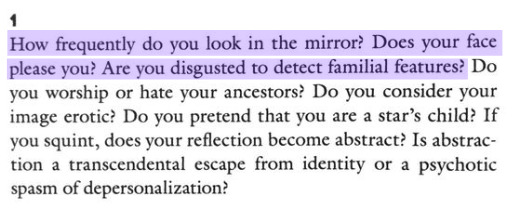
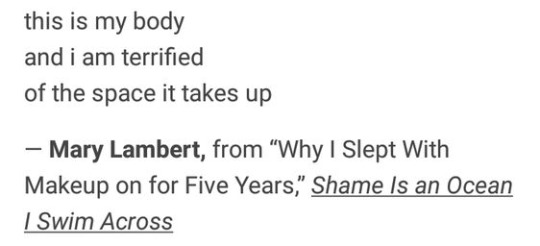



Cameron Awkward-Rich THEORY OF MOTION (4): ANOTHER MIDDLE-CLASS BLACK KID TRIES TO NAME IT (via @sweatermuppet) // Wayne Koestenbaum "Figure;" My 1980s and Other Essays // Mary Lambert "Why I Slept With Makeup on for Five Years;" Shame Is an Ocean I Swim Across // Keaton St. James DYSPHORIA CREEK // Richard Siken "Birds Hover the Trampled Field;" War of the Foxes (via @newvision) // Greta Moran Slow First
#body horror but in a trans way#on self#poetry compilation#poetry parallels#web weave#web weaving#cameron awkward rich#theory of motion: another middle-class black kid tries to name it#wayne koestenbaum#my 1980s and other essays#mary lambert#shame is an ocean i swim across#keaton st james#dysphoria creek#richard siken#war of the foxes#greta moran#slow first#poem#spilled poetry#spilled thoughts#spilled ink#writing#dark academia poetry#dark academia#dark academia quote#words#poetry#spilled feelings#spilled words
711 notes
·
View notes
Photo

Beth Behrs, (Instagram, August 29, 2015)
—On Booze, F. Scott Fitzgerald (2011)
—My 1980s and Other Essays, Wayne Koestenbaum (2013)
—Little Birds, Anaïs Nin (1979)
—Americanah, Chimamanda Ngozi Adichie (2013)
—The Woman I Wanted to Be, Mary Oliver (2014)
—Luckiest Girl Alive, Jessica Knoll (2015)
#Beth Behrs#On Booze#F. Scott Fitzgerald#My 1980s and Other Essays#Wayne Koestenbaum#Little Birds#Anaïs Nin#Americanah#Chimamanda Ngozi Adichie#The Woman I Wanted to Be#Diane Von Furstenberg#Luckiest Girl Alive#Jessica Knoll#books
6 notes
·
View notes
Text
Misunderstanding
I received a note from someone who was upset I “failed to cite Scott McCloud’s Understanding Comics” in my research for my work on Neil Gaiman's Chivalry and the essays I wrote about it.
I really appreciate that people want to make sure credit goes where it's due, and I have a lot of respect for Scott McCloud's accomplishment with his wonderful book.
I haven't read it myself in some years, and didn't cite it in my articles because I didn't reference it. I don't even know where my copy is so I don't know what McCloud referenced, either.
The information in my articles re: illuminated manuscripts and the Bayeux Tapestry, as well as other theories about the development of sequential art from prehistory, not only predate McCloud's work (and in fact, predate McCloud's birth,) but they are so common and so well known in comics circles that asking me to cite them seems as weird to me as asking me to cite the information that George Washington was the first President of the United States.
A part of me wonders if someone is trying to play, "Let's you and him fight."
No.
But I’m happy to bring to your attention some reading material.
Stephen Becker in his 1959 work Comic Art in America: A Social History of the Funnies, the Political Cartoons, Magazine Humor, Sporting Cartoons, and Animated Cartoons was among the first to discuss the Bayeux Tapestry as comic art. I read that book sometime in the 1980’s. I think a lot of people assume the Bayeux tapestry as comic art was McCloud’s idea, but we don’t all walk around with a reference library in our heads, so there you go. I can’t find my copy of Becker’s work to quote, but I did find an article by Arthur Asa Berger with a mention of the Bayeux Tapestry as comic art in the summer 1978 issue of The Wilson Quarterly.

My first exposure to the idea of comics as descendant of fine art was Maurice Horn’s 1976 The World Encyclopedia of Comics which was my first read re: comics history. I still have my tattered 1976 edition.
While Horn scorned the idea that tapestries and manuscripts could be comic art (see, it was a matter of discussion way back then, so much so that authors were writing snarky asides to one another about it,) he believed the origin of sequential art was in the Renaissance sketches of Leonardo da Vinci - which I think everyone now agrees is kind of a bonkers idea.

I think Horn was just intent on elevating the comic art form by hooking up with da Vinci.
You go, boi.
Comics as descendant of art on scrolls is a very common theory, the easiest to trace being in Manga! Manga! The World of Japanese Comics by Fred Schodt published in 1983 when I was still a teenager. I can't find my copy to show examples, but this text is still in print and you can go read it for yourself.
I was introduced to manga by cartoonist Leslie Sternbergh and bought Schodt’s book at Books Kinokuniya on (I think) a trip to New York around the time of first publication of Schodt’s work. And years later took a trip to Japan with Fred Schodt and a group of cartoonists including Jeff Smith and Jules Fieffer, Nicole Hollander, and Denys Cowan as the guests of Tezuka Productions.
Here we all are.

So, I’m familiar with manga, see.
As for comics as descendant of cave paintings, hieroglyphics and ancient art in general, Will Eisner’s 1985 Comics and Sequential Art not only made all of those points, but made those points with comic art examples. Like these.

And this.

And this.

And more than a few words on this:


I find it amusing that someone is questioning why I didn’t cite McCloud when what you should probably be questioning is why more people don’t cite Eisner who produced his book eight years before McCloud published his and who is well known to have influenced McCloud.
Whatever. My book's autographed.
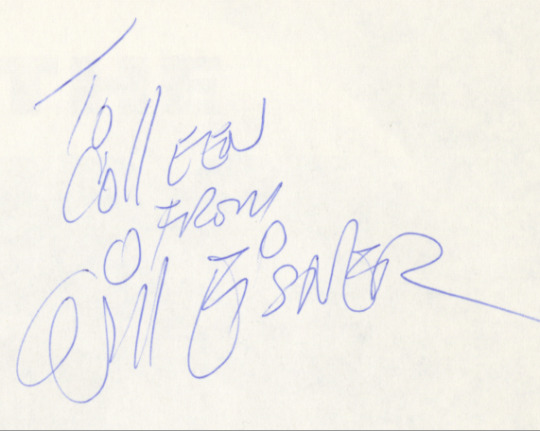
I also danced with Eisner. Eat your heart out.
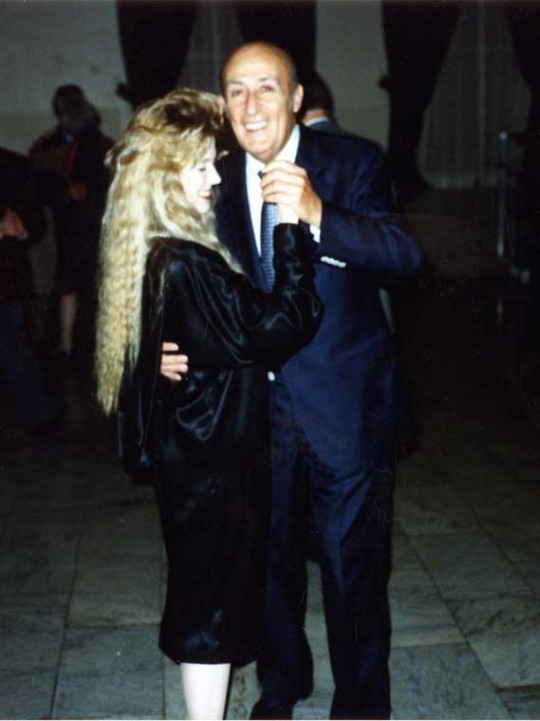
Understanding Comics is a terrific work with huge advantages over every book (that I know of) about comics that came before: it taught comics entirely in the language of comics.
But the discussion in it about the origins of comics and my work especially re: illuminated manuscripts/tapestries, did not originate with McCloud. I research illuminated manuscripts because it’s my hobby and it informs my art.
I encourage everyone to read Understanding Comics because it is an outstanding work.
But it’s not the book that introduced me to the concepts of the development of comic art. It’s not even the point of origin of those concepts. So, there is no reason to cite it.
Also, shocking as it may seem, I occasionally come up with ideas on my own. While I'm younger than McCloud, I've actually been a comics pro longer than he has. So I've had plenty of opportunity to, you know, read things and toss things around, and decide for myself.
When I first read Chivalry and first begged Neil Gaiman to let me adapt it, my head full of the work of Alberto Sangorski and his art for Tennyson’s Le Morte D’Arthur, Understanding Comics hadn’t been published yet.
It's been a good twelve years since I last read McCloud's work, and I don't think I've spoken to him five times in the last three decades. But I'm pretty sure he never mentioned Sangorski.
I hope that clears everything up, and maybe introduces some of you to some works you might not be aware of.
Have a great day.
#understanding comics#comics history#neil gaiman#scott mccloud#chivalry#jules fieffer#tezuka productions#manga#will eisner
2K notes
·
View notes
Text
Punk History Resources: Vol. 1
This is a compilation of resources found and recommended by various alternative bloggers, each of whom are credited for their contributions. This started because I was getting SO MANY asks about resources such as videos, books, and websites to use to learn about punk history. Admittedly, my own list isn't that long, so I thought it was best to reach out to some others and share their knowledge with everyone. So thank you again to everyone who helped out with this!!
@raggedyfink @lovintheaesthetic @punk-patches @my-chemical-ratz
YOUTUBE:
Punk/Goth Docs Playlist on Youtube (77 Videos) (raggedyfink)
1991 The Year Punk broke (lovintheaesthetic)
She's Real (Worse Than Queer) (lovintheaesthetic)
Don't Need You, The Herstory of Riot Grrrl (lovintheaesthetic)
The Long Queer History of Punk (lovintheaesthetic)
The very Black History of Punk Music (lovintheaesthetic)
Punk's Not Dead (lovintheaesthetic)
BOOKS:
Phantoms the Rise of La Deathrock (raggedyfink)
Too Tough to Love by Roxy Ramone (raggedyfink)
I Slept With Joey Ramone by Mickey Leigh (raggedyfink)
Please Kill Me, The Uncensored Oral History of Punk Rock (punk-patches & lovintheaesthetic)
Encyclopedia of Punk (punk-patches)
The Day the Country Died: A History of Anarcho-Punk, 1980-1984 (my-chemical-ratz)
The Heebie-Jeebies at CBGB's: A Secret History of Jewish Punk (my-chemical-ratz)
Sellout: The Major-Label Feeding Frenzy That Swept Punk, Emo, and Hardcore (lovintheaesthetic & my-chemical-ratz)
Tranny: Confessions of Punk Rock's Most Infamous Anarchist Sellout (my-chemical-ratz)
Punk Rock: An Oral History (my-chemical-ratz)
Girls to the Front: The True Story of the Riot Grrrl Revolution (my-chemical-ratz)
Queercore: Queer Punk Media Subculture (my-chemical-ratz)
Queercore: How to Punk a Revolution: An Oral History (my-chemical-ratz)
Spider-Punk: Banned in D.C.(this doesnt have anything to do with history but i love spider punk so) (my-chemical-ratz)
MOVIES / DOCUMENTARIES:
The Punk Singer (punk-patches)
Queercore: How to Punk a Revolution (punk-patches)
Punk's Not Dead (punk-patches)
Pansy Division: Life in a Gay Rock Band (punk-patches)
Queercore: How To Punk a Revolution (my-chemical-ratz)
Afropunk (my-chemical-ratz)
Punk in Africa (my-chemical-ratz)
A Band Called Death (my-chemical-ratz)) (link courtesy of @wrench-p, but is unavailable to watch in the US))
ARTICLES:
(some of these are found on JSTOR, but you can sign up for a free 100 articles per month)
Muslim Punk in an Alt-Right Era (my-chemical-ratz)
A History of Punk (my-chemical-ratz)
Jews, Punk and the Holocaust: From the Velvet Underground to the Ramones: The Jewish-American Story (my-chemical-ratz)
What is Punk and Why Did It Scare People So Much? (my-chemical-ratz)
An Account of a South African Punk Rock Music Collection (my-chemical-ratz)
Queer As Punk: A Guide To LGBTQIA+ Punk (my-chemical-ratz)
Did Punk Matter?: Analyzing the Practices of a Youth Subculture During the 1980s (my-chemical-ratz)
ZINES:
(some may not be *about* history, but they’re a huge part of it!)
Punk Planet archive (my-chemical-ratz & safety-pin-punk)
Queer Zine archive (I personally like the anon boy collection haha) (my-chemical-ratz)
Archive.org in general has a lot of zines :) (my-chemical-ratz)
ETC:
(These aren’t about punk history itself but could be helpful in learning about the politics that go with being punk)
A History of Punk from 1976-78: A Free Online Course from the University of Reading (safety-pin-punk)
Punk History Reading List (safety-pin-punk)
Essays about socialism (my-chemical-ratz)
Leftism 101 (my-chemical-ratz)
Rights as an American protester (my-chemical-ratz)
Social justice classes (I’m really excited to go through these!!) (my-chemical-ratz)
Stamped (my-chemical-ratz)
How To Be An Anti-Racist (my-chemical-ratz)
Nice Racism: How Progressive White People Perpetuate Racial Harm (my-chemical-ratz)
I would love to make a Vol. 2 post at some point in the future, so if you have resources and want to share, PLEASE message me!!
#punk 101#punk culture#punk history#punk#punx#punk resources#resource list#friends!!!#making this post legit made tumblr crash on my desktop soo uhhhh let me know if anything is fucked up please!
1K notes
·
View notes
Text

My first encounter with the zine/chapbook/booklet format was with these cool booklets you could get at Revolutionary War sites in New Jersey, which would have short stories or historical essays in them, perhaps accompanied with some art or a map (gee, if that doesn’t sound like an RPG zine, dang). My second encounter was a near simultaneous one-two punch — Pagan Publishing’s Unspeakable Oath, and Necronomicon Press’ gorgeous line of weird fiction chapbooks. Looking at the latter today (and you’ll see all of the former on weekends later this year).
History of the Necronomicon (originally 1980, this is the sixth printing from 1992) is, appropriately, a pretty typical example of the products. This is a facsimile of a short run of booklets produced as a memorial for Lovecraft in 1938, reproducing his bibliographic essay on his most notorious grimoire. S. T. Joshi has a brief historical afterword. The whole thing is printed on heavy stock, with a bright yellow cover adorned with black and white art by Jason Eckhardt (very into the scorpion scarf). A handsome package containing an entertaining piece of writing by a weird fiction author that was otherwise difficult to gain access to (I don’t know of any other places the essay was collected before Arkham House’s Miscellaneous Writings in 1995).
The essay itself is interesting, a great example of how Lovecraft imbued the Necronomicon with a beguiling authenticity through faux-academic writing and reference (it also is a curiously presentation of Lovecraft’s default xenophobia mixed with an abiding love for the Thousand and One Nights, both of which clearly inform the text). The book’s Arabic title is Al Azif supposedly takes its name from the buzzing sound of locusts that was associated with Djinn and whispered revelation (and hence the locusts in Eckhardt’s art). The book of the buzzing. Love that.
#roleplaying game#tabletop rpg#dungeons & dragons#rpg#d&d#ttrpg#Necronomicon Press#Lovecraft#Necronomicon
88 notes
·
View notes
Text
To Live So Close To The Spotlight (The Zeppo)

I have, in essays past, referred to Xander Harris as one of the most controversial characters in Buffy the Vampire Slayer. After spending more time in the current fandom landscape, I need to correct that statement. He’s simply one of the most disliked characters in Buffy the Vampire Slayer. A lot of people hate him, and given his appearances up until now, it’s not entirely difficult to see why. Xander is an archetypical example of what I will call the Mild Nerd Guy; a trope born out of the 1980s and its Revenge Of The Nerds-led championing of geek culture. A trope that unfortunately came to dominate genre television throughout the 1990s and 2000s.
This is a character who is defined in opposition to more typical Dashing Action Hero archetypes. Where the Action Hero is strong and muscle-bound, the Mild Nerd Guy is physically weedy. He is often shy and lacking in self-confidence. He will appear creepy when he means to be charming – but in an innocent way that encourages us to feel sympathy with this helplessly befuddled young man. He has interests coded as “nerdy” – comic books, science, maths, Dungeons and Dragons. He will be unsuccessful with women, and more often than not will concentrate all his sexual energy onto a single desired target: a popular and attractive woman. This woman will - at least at the beginning of the story – neglects his silent pining in favour of clearly undeserving Bad Boys and Popular Jocks. This is where you get is your Scott Pilgrims, your Ross Gellers, your Tom Hansens, your Every Character Anthony Michael Hall Ever Played… and yes, your Xander Harrises.
In essence, the Mild Nerd Guy is an alternate model of masculinity, one that certain types of men (shy, nerdy, physically weak) may relate to more than the Dashing Action Hero archetype. Unfortunately, while the trope often presents these men as more respectful towards women than their counterparts, the reality is that female autonomy is a secondary concern in both cases. These are competing models that men can use to Earn Women. Neither is actually concerned with the desires and goals of the women involved at all.
The Mild Nerd Guy has obvious parallels to the sociological concept of the Nice Guy, a term that most in feminist circles should be comfortably au fait with by now. The Nice Guy feels deserving of the attentions of women solely because of his lack of overt hostility towards them, and resents them when this “niceness” is not immediately rewarded with sexual favours. While the two concepts should not be conflated – one is a writing trope while the other is a social phenomenon – they are inextricably linked. Media informs the way we interact with the world, and the world informs the way we interact with media. Male entitlement engorges itself with stories of men winning women through inaction - the implication being that men deserve the attentions of women by default, and should be upset when it is not automatically bestowed upon them.
Meanwhile, women who have firsthand experience of this entitlement and the behaviour it encourages will naturally be fed up with it, and will bring that frustration into their consumption of media. They will take one look at a Scott Pilgrim or Xander Harris and be immediately, justifiably repulsed. While the more fantastical crimes of Angel or Spike can be easily forgiven, everyday crimes cannot. Most women have never met a serial killer. We’ve all met a creepy nerd.
This is not a criticism of viewers who have reacted in that way. The common accusation of Xander being a “Nice Guy” I believe an inaccurate read on his character and a misuse of a term meant for the analysis of reality and not fiction. However, I can’t blame anyone who makes that instinctive leap. In fact I would say that bringing one’s own experiences to the consumption of media is the only correct way to watch television. And yet, I can’t count myself truly among that crowd. Despite my distaste for the simpering entitlement this trope has encouraged in male nerd circles, and despite the times I have been disgusted by a line Nicholas Brendon has been made to deliver thus far, I can’t say that I don’t like Xander. In fact, I would say I like Xander, and this episode is a big reason why.
Read More
185 notes
·
View notes
Text
Only Friends, Boston, and Queer Culture
I wanted to talk a little bit about an observation that I made about Boston and how he acquires sex partners (i.e. who he picks up, how he picks them up, where he picks them up, and where he chooses to have sex). Now, again, we are only two episodes in so I will not presume to make a pattern of anything quite yet, and I am looking forward to seeing how my current observations shift in light of any new information coming out of future episodes. But, it was notable to me that the only times Boston has been seen actively pursuing a second sexual encounter with someone is either in public spaces or after he has had sex with them in public.
Because Boston is very sexual, we actually have a lot of data points on him already, (and will likely get many more, seeing as Boston has been in 5 out of 7 of the heavy makeout/sex scenes in the show so far). What we have seen so far is a one night stand with Drake’s character after Boston is picked up at a bar and brought back to unnamed-Drake-character’s apartment; Boston returning for a second and third sexual encounter with Nick after he and Nick fuck for the first time in the cellphone repair shop; and Boston openly flirting with and trying to tempt Top in to sex in exclusively public spaces.
Cruising
What is Cruising and Why is it Important?

Photograph by Steven Barker
I realize that there are many people here who may be unfamiliar with the term/concept of ‘cruising’. As a self-defined “baby gay” there are many terms that came out of the past decades’ queer culture that I was and am personally unfamiliar with. As such, I wanted to make sure everyone was on the same page with the terminology. “Cruising” is a code-word/gay slang that refers to an individual or individuals ‘walking or driving around a locality, called a cruising ground, in search of a sex partner, usually of the anonymous, casual, one time variety’ (Wikipedia).
In her essay Respectable promiscuity: Digital cruising in an era of queer liberalism, Jody Ahlm (then PhD candidate, now Dr.) states the following: “Cruising traditionally occurs in bars, clubs, or public spaces such as parks and public restrooms where men generally signal sexual interest in another man through established non-verbal signals (Be ́rube ́, 1996; Delany, 1999; Humphreys and Rainwater, 1975; Tewksbury, 2002).”
For the sake of simplicity, cruising is a term applied to the action of (usually, but not exclusively) gay men seeking out casual sex in public spaces.
Cruising is and was an important aspect of queer culture, for a number of different reasons. “Tearooms” or private public spaces that were adapted to accommodate gay sex (public bathrooms, for example). While a benefit of tearooms was instantaneous sex, a much more important and notable aspect of tearooms was who in the queer community was frequenting these cruising locations
Of the bar crowd in gay (homosexual) society, only a small percentage would be found in park restrooms. But this more overt, gay bar clientele constitutes a minor part of those in any American city who follow a predominantly homosexual pattern. The so-called closet queens and other types of covert deviants make up the vast majority of those who engage in homosexual acts- and these are the persons most attracted to tearoom encounters…It may be more surprising for the outside to discover that most of these [tearoom participants] are married. Indeed, 54 percent of my research subjects are married and living with their wives. (Tearoom Trade, Laud Humphreys, 1970)
In short, cruising and cruising locations are important to ensuring that men who have sex with men (MSM) who are closeted, married, or do not frequent bars, have an opportunity to engage in sex with other men. (Tradition of sex cruising at Aquatic Park to end. John Geluardi, 2001)
How Cruising has Changed Over Time

Overall, cruising is a lot less popular now than it was in the 1960s and 1980s, in part due to the AIDs epidemic and concerns of HIV transmission (Ahlm, 2017). Ahlm’s essay argues that the AIDS epidemic “initiated a trend toward monogamy among gay men” and that apps like Grindr have shifted the landscape of sexual interest and politics towards a “contested cultural space where publicness and privateness co-exist, creating tensions for self-presentation that are structured by contemporary sexual politics.”
Sociologists have identified a shifting in cruising culture from public, in-person spaces to private, online spaces. In her research, Ahlm noted that none of her subjects who used Grinder reported engaging in public or semi-public sex or being asked to engage in public or semi-public sex by another person. So we are seeing the landscape of where and how gay men engage in sex shift ever increasingly towards private spaces. We can ask ourselves why that may be:
Dalton (black/mixed,5 28) says,”People like to maintain a certain image of themselves, and everybody wants to appear chaste but desirable at the same time, and whatever. People will say ‘‘Oh you’re going on there and you’re trying to do that [find sex], I just talk to people and I never do anything.’’ I’m like ‘‘Sure, right’’ [sarcastic tone].” The multiplicity of intentions on Grindr allows for plausible denial of promiscuity, while the app’s reputation requires constant management of the stigma in order for that denial to be plausible. Like the majority of users, Dalton’s profile says he is on the app for ‘‘Friends, Chat, Networking.’’ However, sexual interaction is the goal of his in-person meetings, and he only chats with people he finds attractive and would potentially like to have sex with. This contradiction between stated intentions and actual use is not unique to Dalton’s Grindr use, it is the rule rather than the exception (Ahlm, 2017)
While privacy can be a valued aspect of people’s personal life experiences, shifting cruising culture to major online spaces designed specifically for gay people, and having sex with people who connect across mobile apps, is contributing to respectability politics:
Shifting cruising to private spaces—both actual sex acts and the practices associated with finding a sexual partner in a public space, furthers the sanitation of gay physical spaces. Users can meet sexual partners without ever leaving home, and public gay spaces become sites for platonic socializing. Gay men go to the bars with their friends to hang out, not to cruise…The performance of cruising is desexualized by the plausible deniability of using a phone app and the plausible deniability of Grindr itself, as discussed earlier. It is not just public sex that is disappearing, so too is the public pursuit of sex. This is not to say that gay bars have been completely desexualized…However, as Orne (2016) shows in his ethnography of Chicago’s Boystown, they are the cultural markers that make the neighborhood a popular place for bachelorette parties ‘‘on safari’’. They are not the same as a visible collective practice of searching for and choosing a sexual partner for the night, regardless of where the sex occurs later. (Ahlm, 2017)
TL;DR: The act of looking for sex partners and engaging in public or semi-public sex as a result (“cruising”) has been steadily phasing out as a practice in gay culture, heading towards more private sexual encounters with sex partners who meet on mobile apps, ultimately resulting in a sanitized image and partial desexualization of gay spaces/bars.
Boston’s Cruising Habits

When I was reading that Ahlm piece, I could not help but think about our very first introduction to the characters of Only Friends in Episode 1. The show opens at a gay bar, we go around listening to Mew’s descriptions of what archetypes his friends fit in to, at which point we learn that everyone in attendance at the bar that particular evening are wearing wristbands indicating their availability to be hit on. Which is making me feel like Jojo and co. (Ninew, Den, the rest of the writing crew) are placing their characters in a past gay culture, giving them an opportunity to return to roots of public cruising. Not every character will engage in such activities, but we know for a fact that Boston and Top are cruising in some capacity from the outset of the show (Boston trying to talk his way into a threesome with Bar Stranger #1, Boston getting picked up by Bar Stranger #2 [aka unnamed-Drake-character], Top striking up conversation with Mew after Mew bumps into him), and with the direct references Jojo and co. are making to Queer As Folk (UK) (1999) if the goal of Only Friends is to highlight queer culture, I would not be surprised.
While we are only two episodes in at the time I am writing this, it was intriguing to me that Boston appears to be one of the few characters engaging in more traditional cruising culture. It is clear that most of the main characters frequent Yo’s bar, though it appears the friend group uses the space more as a place to hang out with one another, rather than a space to cruise. All except for “The Hunter”, Boston, who is seen constantly attempting to pick up, or being picked up by other queer men in a bar setting. We know that Top also frequents the bar, and we have not as of yet seen him with any other friends, so we can presume that Top spends his time at Yo’s bar cruising as well (based on the fact that he has slept with Boston and he did hit on Mew at the bar, but we don’t have any definitive evidence of that yet because we don’t know how Top and Boston met, and Top has only actively been pursuing Mew thus far).
A trend I saw in the first two episodes when it comes to Boston that I find particularly noteworthy (aka, is a trend I want to track as the show progresses to see if that trend continues), is that Boston is only ever repeating sex with people who engaged in public sex with him in the first place. From flashbacks we see Top and Boston making out in a photobooth, an implication there that Top and Boston then fucked in the photobooth since “once was enough” for Top and Boston. The first time that Boston and Nick fuck, they do so in the aisle of the cellphone repair shop. Nick may turn off the lights, but that does not negate the fact that there is a chance that Boston and Nick may be walked in on and caught by an unassuming customer. When Boston hits on Top, it is in a public space: the bathrooms of Yo’s bar, when Boston attempts to initiate a second sexual encounter with Top, it again is in a public space: the locker room/showers at the wakeboarding place.
Public Sex, Photography, and Brewing Thoughts about Boston
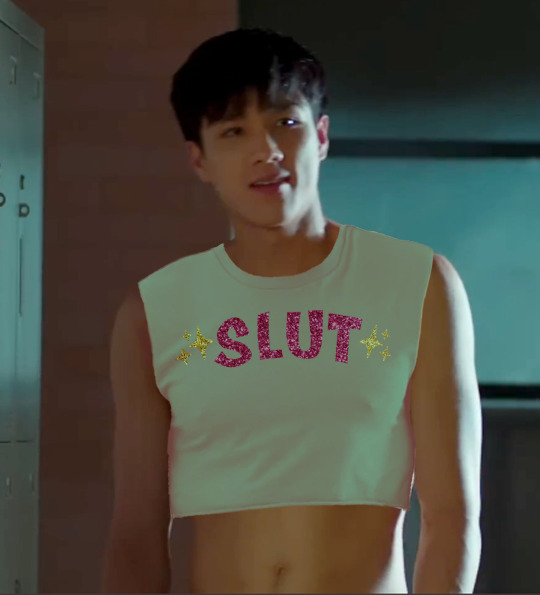
Image by @nongnaopat
While I was reading up on cruising, I came across a couple articles with quotes and observations that immediately made me think of Boston, and a question started brewing in my mind:
Is Boston a physical manifestation of the queer hookup cultures 60s-80s?
Boston’s Personality v. Public Sex
Again, we have only seen two episodes of Only Friends so I am not yet secure in my own interpretations of Boston. However, I was thinking about the conversations that occurred the other day about how Boston must exert control over others (@respectthepetty), and how he is ready and willing to meddle in Mew’s life by trying to seduce Top, but that there is noticeable fear and slight panic at the thought that Mew might catch him and Top together in the shower (@stuffnonsenseandotherthings).
There was something that just spoke to me so strongly about Boston’s character archetypes in relation to the conversations brought up in Chapter 6: Tearoom Trade: Tales of Public Sex of the book Marginal People in Deviant Places: Ethnography, Difference, and the Challenge to Scientific Racism by Janice M. Irvine.
In this chapter, Irvine discusses the essay Tearoom Trade: Impersonal Sex in Public Spaces written by Laud Humphreys. Within this chapter, Irvine states “Humphreys argued that tearoom participants varied in vulnerability to risk of exposure. He noted that married men and men who did not have career autonomy were highly vulnerable to negative consequences if discovered in the tearooms.” (Note: my understanding of “tearooms” from this reading is that they are public restrooms that have been transformed to better support instant sex, i.e. a broken window for a lookout, glory holes, walls removed between stalls, etc.) While an assumption could be made that vulnerable men would not engage in public sex, that assumption does not carry through to reality. Humphreys further claims that highly vulnerable men did still engage in public sex via tearoom visits, but they employed protective strategies to mitigate any suspicion of their queerness, often a hypermoral one.
I know “hypermoral” is not a term that anyone who has observed Boston for more than twenty seconds would really attribute to his character, but what did speak to me is what Humphreys says about the strategies employed by the highly vulnerable:
The secret offender may well believe he is more righteous than the next man—hence his shock and outrage, his disbelieving indignation, when he is discovered and discredited…Subjected to harsh social condemnation and legal penalties, the tearoom participant was likely to turn his anger and hatred on himself or others in his group. “Worse yet,” Humphreys argued, “he may justify himself by degrading others, displacing his hostility onto outgroups in the manner of the authoritarian personality.” (Irvine, 2022)
Now which Only Friend character are we thinking of based on the quote above?
“Hence his shock…when he is discovered…”
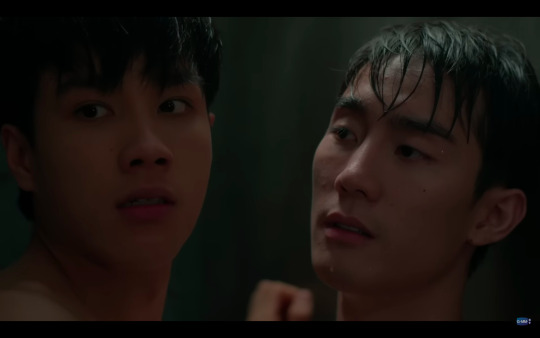
“The tearoom participant was likely to turn his anger and hatred on himself or others in his group”


“He may justify himself by degrading others”

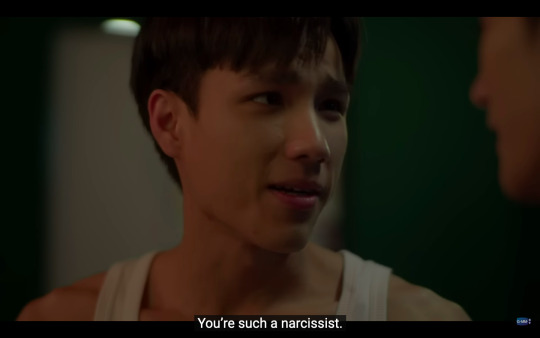


One thing we do know about Boston is that he currently does not have career autonomy. He wants to be a photographer, but he is studying business because he may have to take over his father’s company (YouTube: Only Friends, Episode 2, Part 2/4, timestamp: 2:27). How much that pressure is really on him and how highly vulnerable Boston may be if caught engaging in gay, public sex remains to be seen, but to me it is worth noting. A research question to be asked: Why does Boston act the way he does? Is he vulnerable in some way and trying to compensate for it, or is just genuinely an asshole? Not sure, but I look forward to finding out.
An additional similarity that immediately came to mind in my readings and their relation to Boston was a reference to Rechy and his writings about male hustlers:
Rechy wrote about how male hustlers selling sex navigated the toilets. He cited the norms of the sexual marketplace with sociological precision: “Stand at the urinal long after youre [sic] through pissing. At the slightest indication of interest from someone in one of the cubicles, go up to him quickly before he gets any free ideas and say: ‘I’ll make it with you for twenty.’ (Irvine, 2022)
Boston is not a sex worker, he is not asking to be paid for his time, but the way he approaches Top in the bar bathroom to try to prompt a second sexual encounter does allude to the hustler culture. Top is standing at the urinal when Boston approaches
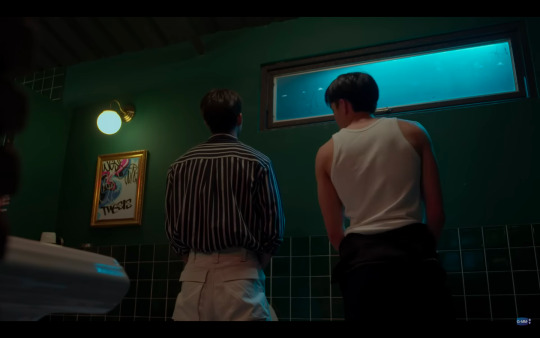
He strikes up conversation with Top who only really seems to be partially engaged, Top walks away from the urinal to wash his hands, Boston follows, placing his hands around Top’s, trying to proposition sex, appealing to their supposedly similar approaches to sex.

This is not a direct comparison to be sure, but I just wanted to mention it because it felt similar enough to be a reference. This reminded me too of the nod Jojo and Ninew had to gay male sexual culture in The Warp Effect when Alex has his shoulders massaged by a random patron propositioning sex at Jedi’s bar while he is standing at the urinals. Or to the more direct reference to cruising that Jojo and Aof put in to the character of Arm in Gay OK Bangkok, or Army in The Warp Effect (two pieces which I will continue to say are required viewings before [or at this point in conjunction with] Only Friends).
Boston’s Interest in Photography v. Public Sex Debates
Another aspect of Boston’s character that feels relevant to previous queer culture is his interest in photography itself, because photography has its own ties to tearooms and public sex.
In 1964, The Florida Legislative Investigative Committee “published a pamphlet that featured an explicit photograph of a man engaged in a sex act in a public restroom. The report, dubbed “the purple pamphlet,” was intended to shock readers and mobilize antigay repression.” (Irvine, 2022).
As a warning I am about to cite a pretty big chunk of text, but it is important information:
Photography became one of several technologies police and moral entrepreneurs used to observe and produce evidence of sexual deviance. Yet photographic surveillance could also be subverted. After the tearoom photograph was published in the 1964 Homosexuality and Citizenship brochure, conservatives attacked it as pornographic. The committee quickly removed it from the report, but the photograph was reprinted and vigorously marketed by Guild Press, a publisher of homoerotic materials. Gay pulp publishing was growing by 1964, and Guild Press, established in 1962, was no doubt gleeful to find and market this photograph. The Guild advertisement pointed out that this was the only “action photo” of a glory hole scene that had ever been in print, and as historian Thomas Waugh noted, “the glory hole photo became famous.”23 The “purple pamphlet” and its widespread dissemination was an early case of how social and religious conservatives played a significant role in making visible the sexual representation that they condemned. (Irvine, 2022)

Thinking about Boston and his interest in photography, we can notice another potential link to queer culture. Going in to Boston’s darkroom, we see a number of photographs on his wall of hot men in various stages of undress. With the preceding scene of Boston taking a photo of Nick after they fuck establishing some context, we can make some quick assumptions about who those men are to Boston and what was occurring prior to the photo being taken.
Even within two episodes of Only Friends the camera has almost served as an additional character, bringing us in to the private-public spaces we aren’t supposed to witness. In a conversation I was having with @waitmyturtles, she made the absolutely brilliant point: “the camera of the show is messing around with what we perceive as privacy”.
Sure Boston is making sexual advances on Top in the showers of a public locker room, but no one is supposed to know that, at least no one who could be actually, emotionally impacted by catching Top and Boston together. We see it, but we aren’t supposed to.
But I want to move beyond the show’s actual camera to briefly touch upon the other cameras we have seen alluded to on screen so far. Kudos to whoever it was on tumblr that took the screen shots of the hook up between Neo and Drake and pointed out the web camera that was sitting at the top of the computer monitor. Now, we have absolutely no idea if that is relevant at all to future plot lines, if the web cam was on, or if any part of that sexual encounter will come back to haunt Boston. But I think it is worth mentioning the very real and easy possibility that the web cam could have been recording the room (whether it actually was or not). In this way, Boston is playing with fire around what aspects of himself and his sexuality are captured on a screen.
When Boston and Nick hook up for the first time in the cellphone repair shop, Boston stops the make out session long enough to look around. No, not around, up. Up to the ceilings as if he is scanning the room for possible cameras. Again, we don’t know for sure if a) there are cameras there, b) if that is relevant at all to future plot lines or c) if that really was what Boston was doing. But either way, Nick catches on to Boston’s scanning of the room, and turns off the light so that they can’t be seen.
In both of these cases, whether the cameras exist, are on, recording, or saving any information is not fully the point. The point I am trying to make here is that there are constantly opportunities to have gay sex be captured, and whether or not it is comes down sometimes to shit dumb luck.
Conclusion
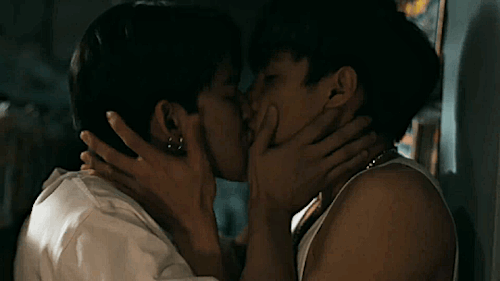
gif by @maxescheibechlinichacheli
I am so fascinated by Boston’s character, just thinking about the ways he does and does not fit in to the archetypes of a highly vulnerable tearoom participant: in his interest being in photography, capturing the images of queer men post-coitus, in the way he approaches Top at the urinal trying to entice him in to sex, in the ways he engages with and thinks of other people, and I am very much looking forward to seeing if this trend continues or diverges. For instance, will we see a drastically different side of Boston if we see more of how he interacts with professors in school considering that the one time that he was really quiet and reserved was during the presentation in front of the entire class? Will Boston fall in to the “public saint/private sinner” dynamic that would root him firmly in behaviors of a highly vulnerable queer man engaging in public sex? Or will he drift away from that alignment?
Disclaimer: I want to acknowledge that I am a Westerner and I am engaging and interpreting this show and the gay culture in this show through my own Western lens as well as the Western Gay Culture lens. However, I feel comfortable using these lenses to discuss, analyze, and identify threads of interest to follow throughout the show because:
In 1984, the ‘Boston Bar Study’ conducted by Men of All Colors Together Boston (MACTB) cited numerous examples of widespread discrimination at gay bars in Boston against black men. Similar types of discrimination have also been cited in Los Angeles and New York (Wat, 2002). Even more troubling is that this type of behavior seems to be international as well*anywhere that gay white men come into contact with gay men of color (Ridge, Hee & Minichiello, 1999). One can only imagine how many others never make it into the new stories. Rather than isolated events attributable to racist owners of single bars, the attempt to patrol the borders of whiteness in gay-owned business establishments seems to be a systematic practice (They Don’t Want to Cruise Your Type: Gay Men of Color and Racial Politics of Exclusion, Chong-suk Han, 2007).
In short, cruising, and discriminatory cruising practices are seen worldwide, and therefore I argue that gay culture in Thailand, while likely not identical, is similar enough to Western gay culture to apply similar frameworks, especially considering the aspects of gay culture Jojo and his co-creators have placed in their past works.
Sources
Ahlm, Jody (2017) Respectable promiscuity: Digital cruising in an era of queer liberalism, Sexualities, DOI: 10.1177/1363460716665783
Chong-suk Han (2007) They Don't Want To Cruise Your Type: Gay
Men of Color and the Racial Politics of Exclusion, Social Identities, 13:1, 51-67, DOI:
10.1080/13504630601163379
Humphreys, Laud (1970) Tearoom Trade.
Irvine, Janice M. (2022) Tearoom Trade: Tales of Public Sex, Marginal People in Deviant Places, https://www.jstor.org/stable/10.3998/mpub.11519906.11
Acknowledgements
I would like to thank @bengiyo, @lurkingshan, @neuroticbookworm, @so-much-yet-to-learn, @waitmyturtles for their thought partnership, edits, and suggestions!
#only friends#only friends the series#ofts#neo trai#jojo tichakorn#ninew pinya#boston#boston x nick#boston x top#neomark#forceneo#wka long post#kicking off the (possible- not guaranteed) WKA Academic Papers on Sex in Only Friends Essay series#only friends meta#only friends analysis#only friends the series meta#only friends the series analysis#ofts meta
369 notes
·
View notes
Text
The Big AIDS Metaphor Post
In her essay "Why Are Americans Afraid of Dragons?" from her book The Language of the Night: Essays of Fantasy and Science Fiction, science-fiction and fantasy writer Ursula K. Le Guin writes—
"The use of imaginative fiction is to deepen your understanding of your world, of your fellow men, and your own feelings, and your destiny."
It would be easy for me to claim that Stranger Things is a show that utilizes its science-fiction elements as an AIDS metaphor, but that only goes so far without being able to prove that the show is in fact employing said metaphor. "The show takes place in the 80's -> AIDS was a big part of the 80's -> therefore the show is about AIDS" isn't an airtight argument in itself. I can quote famous sci-fi writers all day but that still wouldn't prove that the Duffers themselves are actually following similar trains of thought.
So here's my big long post about why the show is utilizing it's science-fiction elements as an AIDS metaphor.
Lengthy discussion of rape, violent homophobia and drug use below the cut.
A Brief History of HIV/AIDS in America
For those not in the know about HIV/AIDS, and in order to all get on the same page, here is a short recap. For my information, I will be this timeline from hiv.gov as well as this timeline created by History Channel, as well as some of the supplemental hyperlinks provided. Any other sources I use will be linked throughout.
HIV, or human immunodeficiency virus is a virus that attacks the body's immune system, making it highly susceptible to infection and cancers. The virus can progress to a more severe version of the infection, acquired immunodeficiency syndrome or AIDS. The virus spreads through bodily fluids such as semen and blood. The most common ways for HIV/AIDS to spread was through unprotected sex and sharing needles while using drugs.
The initial cases of HIV were present in America in the 70's but become much more rampant starting in the early 1980s. Because cases of AIDS were most commonly seen in gay and bisexual men, there was a large misconception that AIDS was a "gay plague" or a "gay disease" as it was nicknamed. By 1984, 3,500 Americans had died from AIDS related illnesses.
The reason that AIDS epidemic got as deadly as it did is often attributed to the Reagan Administration's failure to act, something that President Reagan denied. Reagan would not publicly acknowledge AIDS until 1985, despite U.S. health officials being aware of AIDS since 1981.
Understanding just how entrenched this metaphor is in the story will include going through each season and examining in detail how each one plays into this metaphor.
Season One: Establishing Metaphor & Government Cover Up in Early Years of Epidemic
The AIDS metaphor is most closely connected with Will's storyline, although it's not exclusive to Will nor is his storyline exclusive to AIDS. Furthermore, the supernatural elements of this show are multifaceted. AIDS is but just one of the metaphors expressed in the show, but for the sake of this post it's what I will be focusing on.
The setup begins following Will's disappearance in episode 1, when Joyce introduces Will's queer coding to us.

By 1983 the terms "gay disease" and "gay cancer" had been in the public vocabulary for a couple years now. So when Joyce brings up his queerness in regards to to his disappearance in a show that takes place in the early 1980s, there is a subconscious correlation that can be made in the watchers mind. His sexuality is significant to the why he went missing, otherwise why bring it up?
We then hear through Troy exactly what the town believes happened to Will.

I think that Troy essentially being a mouthpiece for his father is significant to show that Troy's beliefs are not exclusive to him and they do not exist in a vacuum. Troy's homophobia is a product of his environment, which includes his home and by extension, Hawkins.
The specification that Will was killed by "some other queer" adds another layer under the surface of Troy's statement, one that implies that Will was raped before he was kill, otherwise, again, why bring up sexuality in the first place? This was the attitude toward gay men— they rape and kill little boys.
In early 1984, there was a study conducted by the American Journal of Medicine to trace the sexual partners of a cluster of patients with Kaposi Sarcoma, one of the common cancers that killed AIDS patients. The study identified a flight attendant as "Patient O" who was among the first to exhibit symptoms of HIV/AIDS and had a rather active sex life with a multitude of sexual partners. The study was soon misconstrued by the public to claim that there was a Patient Zero who was "a promiscuous or even malicious gay man who single-handedly and knowingly touched off the AIDS pandemic in the United States."
Another crucial factor of the metaphor is the cover-up and blame shifting from the government lab, the exact thing that allowed the problem to escalate and become as deadly as it did to begin with. In the early years of the epidemic, Reagan slashed the budget of public health agencies like the CDC, and it would be years until he ever made a speech about it let alone even mentioned AIDS publicly.
We see how adamant the lab is to cover up any supernatural involvement with Will's disappearance in an attempt to cover their own asses. Framing his death as an accident was their call, all while being acutely aware of what the actual problem was. This confrontation from Joyce to Brenner puts it pretty aptly.
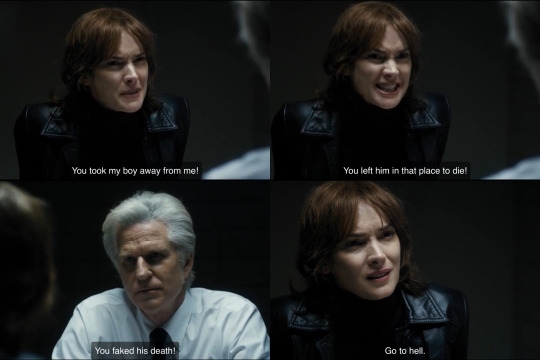
Tangent About Barb
This AIDS metaphor is something that I thought of when I first watched the show back in 2016 (humble brag) but what tipped me off the most wasn't Will or the lab but it was the fact that Barb was the other victim shown.
Barb's queer coding was clear to everyone and their mother. Hell, there's even a joke about it in the Bad Lip Reading of the first season. Barb, Nancy's short haired female friend who takes issue with Nancy's new relationship and has a hard time fitting in with with all of the heterosexual antics of Steve's house party. She's singled out, and while the rest of the gang get to casually enjoy the pleasures of sex, while Barb, another member of the queer community, sadly loses her life. The show cuts between Nancy having sex with Steve with Barb being killed to emphasize this stark contrast.

Season Two: Personal Effects of HIV/AIDS & Social Stigmatization
Season one was surrounding Will while not really showing us much of his pov, but season two dives right in to his perspective.
So, remember when I talked earlier about how Troy, and by extension the town, believed that Will was raped? Well, he wasn't exactly wrong.

This moment wasn't lost on me when I originally watched the show, although I think I ignored the implications because I didn't want to believe what I was seeing. But it's pretty well spelled out— A long, tentacle-like organ used for the sake of reproduction (Will "births" D'Art as a result of this), is inserted inside of Will's mouth without consent.
It's been a year, and Will is still dealing with the trauma of what happened, along with all of these new changes to his life. Will frequently attends doctors appointments at the lab, where the lab themselves aren't completely confident what is happening with him either.
When cases of HIV/AIDS were first appearing in the U.S., health officials were unclear as to what exactly this virus was and how it worked, only that clusters of otherwise healthy gay men were suddenly developing rare and aggressive infections and cancers.
Owens refers to the spread of the Upside Down very clinically— describing it as some cancer. One of the first articles published about HIV/AIDS in America before more information was known was a New York Times article titled "Rare Cancer Seen in 41 Homosexuals." The cancer the headline refers to being Karposi Sarcoma, the rare skin cancer developing due to their weakened immune system.

HIV/AIDS in itself isn’t the disease that patients die from, but instead the weakened immune system allows for diseases to take over the body without much defense. After his visit to the Upside Down, Will faces a series of “True Sight” visions as Mike puts it, which allows for a destructive foreign entity to invade Will's body and slowly take it over.
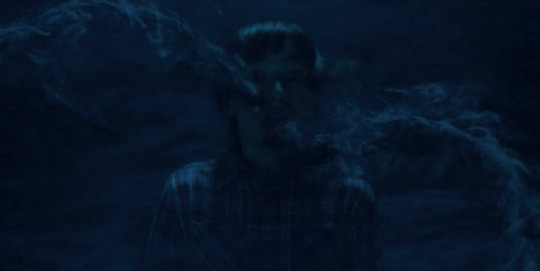
HIV.gov lists the following as some of the symptoms of AIDS:
"Rapid weight loss"
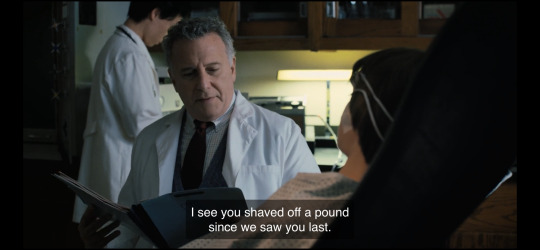
"Profuse night sweats"

and "Memory loss"

To the government agents in the lab, we see just how disposable Will is to them. In their words, if it kills him, it kills him. (thank you to @emblazons for being the one to point this out to me)
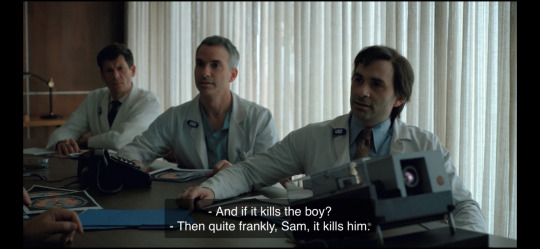
Owens may have held more concern for Will, but he still continues the government cover-up started by Brenner in season one. We also see the fallout of Barb's death, with Nancy and Jonathan fighting to uncover and reveal the truth. Owens is the one who tries to put a stop to their exposé of events to Barb's mom.

Not only is Will facing trauma and his body being ravaged by this new illness, but he's also facing social stigmatization, something common among gay men with positive HIV statuses at this time. There seemed to be some sympathy from the townsfolk when Will was missing and presumed dead, yet he faces animosity almost seemingly because he came back.
The "Zombie Boy" Nickname
I once made a whole separate post about this, but Will's "Zombie Boy" nickname from season two fits in with this AIDS metaphor.
On a surface level, the nickname is in reference to the fact that Will seemed to come back to life despite having a funeral and being buried. In a literal sense, however, his peers are quite literally referring to him a walking corpse that spreads disease. Individuals suffering from AIDS often have very short life expectancies, and zombies are the re-animated dead that aim to infect and kill as many people as possible. It is a very coded nickname.
In the post that I linked, I speculate the possibility that some people in town may even believe that Will has HIV. Remember earlier when I mentioned Troy's comment "he was probably killed by some other queer" which implies a belief that Will was raped. The town don't know about any of the supernatural goings-on, but they do know that Will went missing, was found in a cabin a week later, was hospitalized shortly after and attended frequent doctor visits through the following year. I don't see a reason that malicious rumors would cease, especially considering that they already continue to be cruel and ostracizing with the Zombie Boy nickname.
Look also at this moment of Will getting weird looks as he is being pulled from school to attend his doctors appointment. Why so much stigma around simply going to the doctor?

The 1984 Reelection of Ronald Reagan
In 1984, Ronald Reagan won reelection in one of the biggest election wins in history. And— subsequently continuing his and the governments silence towards the AIDS epidemic.

Season two takes place in the week leading up to the reelection. There are small set pieces that draw attention to this, such as this election sign in front of the library.
If the date November 6th sounds familiar, it should.
Dr. Owens mentions the anniversary of Will's disappearance. The one year anniversary of Will's disappearance is the same day that Ronald Reagan was reelected. Will's trauma is being purposefully associated with that day.

I've also made a separate post before just about the Reagan/Bush '84 signs that litter the lawns of Hawkins houses. They appear most notably in the Halloween episode, building to when Will has his true sight episode that night. There is one clearly in frame just before Will is separated from the group, called a "Zombie Boy" and a "freak" (two very coded nicknames) before he falls into his vision.
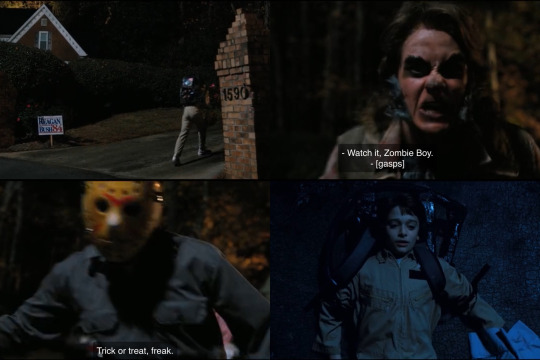
We also get a clear view of the Reagan/Bush sign outside of the Wheeler house before Will describes his experience to Mike.
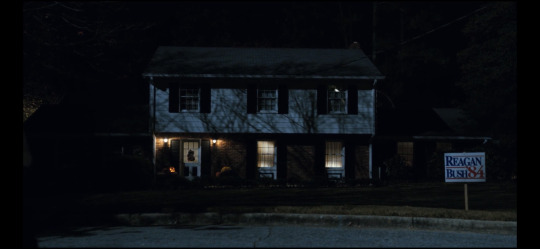
A Tangent About the Wheelers
And now the question on everyone's mind: Are the Wheeler's homophobic?
Ted and Karen Wheeler are not violent, homophobic bullies. That would be a massive reach. But it would also be a reach to say that they are vocal allies. And maybe that's just what the average middle class family
In the very least, the Wheelers are passively contributing to a system that enables homophobia. To be honest, they are probably just going along with what everyone else is doing. Like I said earlier, Reagan was an incredibly popular candidate for the 1984 reelection. The Wheelers have the privilege of being able to comfortably conform without having to worry about much of the consequences. (I'll talk more about the Wheelers later)
In the episode where Will is possessed by the Mind Flayer, Joyce calls the school and we get an extended shot with Reagan's portrait in the background. The shot begins with the portrait slightly obscured, then the camera dolly's in towards the receptionist with the portrait still in frame. Shortly after this Will is possessed in the field. Here is one of the camera begins the shot and where the camera ends the shot.

I also wanna note that when Joyce calls in this scene, the receptionist makes a side comment about her and rolls her eyes. There's a clear animosity towards not only Will, but the whole Byers family, including the adults of the town. Including Reagan's portrait in this shot is meant to create a subtle correlation between him and the stigma that the Byers' face.

Season Three: The Façade of Patriotism Over a Dying Nation
It's 1985, Ronald Reagan has been reelected, and this season introduces Hawkins Mayor Larry Kline.
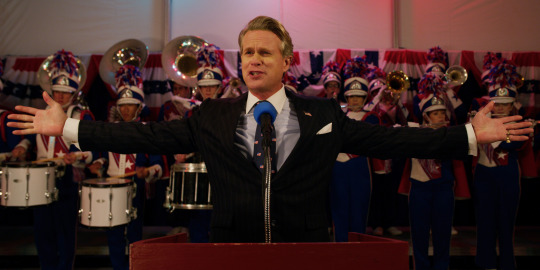
Is Larry Kline meant to be Ronald Reagan?
I would say that Mayor Kline is probably exemplary of American politicians in a broader sense (in fact the Duffers may have been making allusions to Trump with his connection to the Russians) although the fact that he's in office the same time as Reagan is still significant.
In the beginning of the season, Mayor Kline is being met with protesters outside his house, not unlike many of the AIDS awareness protests from the 80's.
The townsfolk are angered with Kline for building the mall and running some of the small businesses into the ground. During Reagan's run, he implemented a system of economics called "Reaganomics," which aimed to cut taxes and support economic growth. Although critics of Reaganomics will point out that his policies had actually increased the wealth gap, making the rich richer and the poor, poor. I want to keep this post about the AIDS metaphor, although I wanted to point this out as it is a connection between Kline and Reagan. And as I said earlier in this post, the metaphors are multifaceted and not just about AIDS.
But continuing, later in the season Kline puts on a big 4th of July festival to celebrate the independence of his country with neon lights and flashy fireworks. Meanwhile, the people of his town are dying right under his political reign.
During season 3, the AIDS metaphor actually moves away from Will, with the focus of his story shifting slowly to romance. This was setup at the Snowball at the end of season 2, and season 3 hints at some of Will's feelings for Mike which will be carried into season 4.
But the metaphor is carried on by Will's name twin, Billy.

Billy and Will sharing the same first name, that being William, feels significant as Will basically passes the baton to him and Billy now becomes the focus for this metaphor. We learn from Max that Billy is very sexually active, and in the beginning of the season he has eyes for Karen Wheeler. It is while he is on his way to this illicit sexual affair when he is "infected" by the Mind Flayer. (this was pointed out to me in the comment of one of my posts, but have since lost it. If you are reading this— thank you.)
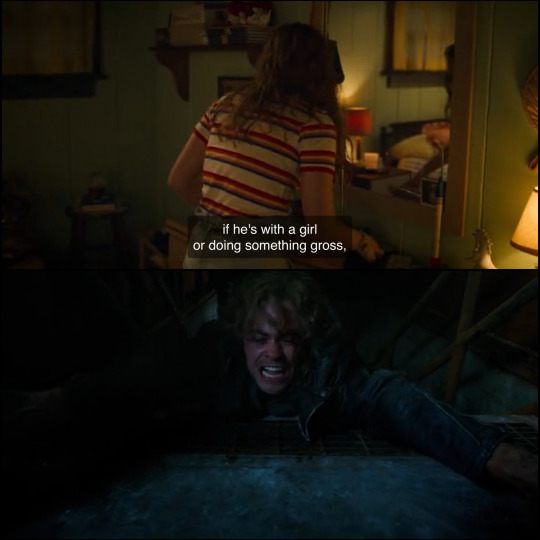
Billy then passes the "infection" along to a girl he was flirtatious with, before the "virus" begins spreading over town.

There is also language and rape imagery associated with being flayed. There is the repeated lines "hold still" and "it'll all be over soon." When Heather's parents are flayed, they are tied up something is forcefully inserted orally, not unlike what we saw with the tentacle inside of Will in season one and his possession in season two. (I first saw this pointed out by @kaypeace21

The flayed begin to eat chemicals, and Nancy makes the comment that Tom, one of the flayed, appears to have been on drugs. Another common way that HIV is spread is through the sharing of drug needles.
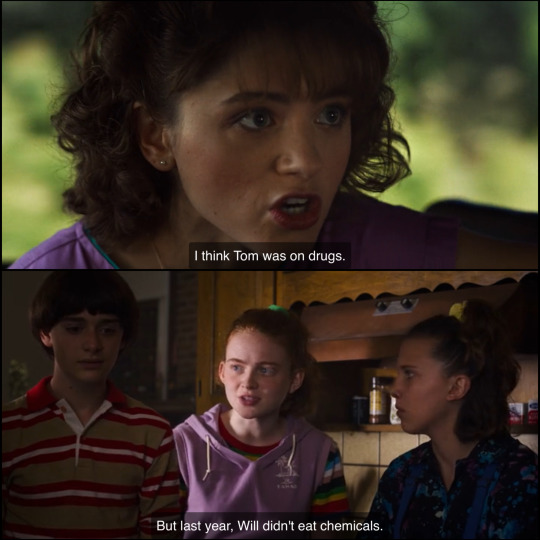
HIV/AIDS in the Press
Nancy's arc with the newspaper this season reminds me a lot of how AIDS was first being reported in the press. Nancy begins her search for a story with stolen fertilizer and diseased rats, not realizing that there was a much bigger and much more dangerous story at hand. One of the first reports HIV in the media was from a CDC Morbidity and Mortality Weekly Report from 1981, which cited five cases of pneumonia in previously healthy gay men in Los Angeles. While still a deadly number, it was relatively small compared to the massive number of AIDS cases and deaths that would soon follow.
When Nancy brings her story to work, Bruce, one of her higher-ups, sips from this rather patriotic coffee mug before telling Nancy to drop the story.

At the end of the 1985 summer in Hawkins, the flayed have died in a "mall fire" and Larry Kline is arrested for colluding with the Russians, and their patriotic façade is shattered.
In September 1985, shortly after actor and close friend of Ronald Reagan, Rock Hudson dies, of an AIDS related illness, Reagan makes his first public acknowledgement of AIDS.
Season Four: Further Stigmatization & LGBT Witch Hunting
In season four the town is finally privy to the fact that there is something wrong going on, although they are unsure of exactly what. When things begin to escalate, instead of blaming the actual guilty party, they go on an all-out witch hunt.
Once again, Will's pretty removed from the AIDS storyline in this season with his arc focusing on his romantic feelings for Mike. With Billy dead and Will out of town, the baton passes once again for the metaphor to be carried by Eddie Munson.
In the first episode of season 4, Eddie is reading a magazine with an article about the Satanic Panic, a real case of wide-spread hysteria in the 1980's regarding the fear of rising Satanism, supposedly promoted by D&D. The article links the game to violent behavior, Satanic worship, sodomy and murder.
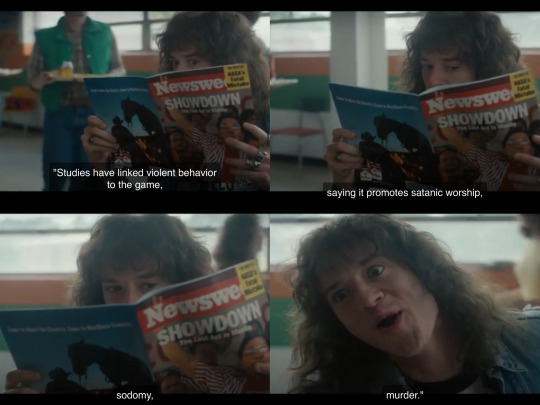
Tangent on Sodomy and Sodomy Laws
Merriam-Webster defines sodomy as "anal or oral copulation with another person." The definition is often expanded to include copulation with animals, although the term sodomy, according to Merriam-Webster, means "especially: anal or oral copulation with a member of the same sex."
While definitions may vary depending on states, some states have specific laws outlawing sodomy, even between consenting adults. In 1986, the Supreme Court upheld Georgia's anti-sodomy laws in Bowers v. Hardwick, after a homosexual man and his partner were arrested after being caught while having sex in his own home. Sodomy laws would eventually be challenged again in 2002 with the Lawrence v. Texas case.
While sodomy can technically can refer to both homosexual and heterosexuals, it is especially and historically has been used in regards to homosexual sex. When Eddie reads the word sodomy here, gay sex is being lumped in and made equivalent to violent behavior, Satanic worship, and murder. Quite literally in season four, Hellfire Club is seen as the evil Satanic sodomizers who bring death to their town.
While trying to find a substitute for the D&D game, one of kids Mike asks mentions 60 Minutes in his rebuttal of Mike's request. This episode takes place on March 21st, 1986. On March 16th, 1986, 60 Minutes played a segment called "Life and Death in San Fransisco," a segment about the AIDS virus on CBS. (EDIT: I originally attributed this to the wrong person, but thank you to @aemiron-main for being the one to point this out. Apologies for my memory mixing up my ST analysts in my head 😔) The archived footage can be viewed on YouTube.
When Chrissy is killed by Vecna inside of Eddie's trailer, leading the town to suspect that Eddie was the killer, she was going there to do drugs. Again, a common way for AIDS to be spread was through the sharing of drug needles. After the town and cops suspect Eddie, the town goes on an all-out witch hunt for him and other members of Hellfire, invoking Christianity as their reasoning. In Eddie's words— "Hunt the freak, right?"

Does this mean that Eddie is queer?
The black handkerchief in his back pocket and Joseph Quinn's flirtatious ad-libs with Steve are not completely lost on me. And the AIDS coding here does seem to be pointing in that direction, but here's what I think.
Eddie's actual sexual orientation, and by extension that of Hellfire, is beside the point and doesn't actually matter in the eyes of the town. Every member of Hellfire could be straight and every member of Hellfire could be gay, but what matters is that Hellfire Club is a group of outsiders that participate in recreational activity that is deemed dangerous, and that in itself is queer, regardless of who they may actually be attracted to.
Another Tangent on The Wheelers
During Jason's religious spiel in town hall which invoked the witch hunt against Eddie and Hellfire, we get this shot of Ted and Karen Wheeler upon remembering that Mike is a part of Hellfire. And boy do they look terrified.
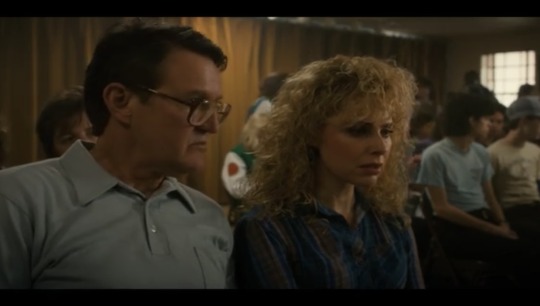
This moment, right here, is what I believe to be the Wheeler rug pull. They may not have been signing up to witch hunt their son when they put that Reagan sign in their front lawn, but this is what it leads to. They're being confronted with the most extreme end of their forced conformity and they fear what they see. I think part of what causes this change in character is because they know Mike, had Mike not been a Hellfire member, who is to say if they would have changed their tune or join in the witch hunt. At the end of the season, when the news reports that the giant gate in town is a "doorway to Hell," both Ted and Karen scoff at the report, calling it "hysteria." The conformists are beginning to un-conform.
Concluding Thoughts & Season Five
Providing a story about HIV/AIDS through a science-fiction metaphor is both practical and ethical. The metaphor allows the show to tell the story to a wide audience without the reliance on outside knowledge. You don't have to be an expert in HIV/AIDS history to understand the story that it's trying to tell. It's ethical as well in that it doesn't force it's incredibly young actors to have to act out being raped and developing HIV/AIDS.
With Eddie Munson dead and Zombie Boy back in town, I think that the AIDS metaphor will shift it's focus back to Will. I think we may see a colliding of the AIDS plot with his romance plot. How do you pursue romance with a HIV+ status? Can you?
The way I see, season 5 has the choice to go in one of two directions:
But first, a short tangent about my uncle
In recent years, I came to learn that my uncle was HIV+, something that wasn't known to me when I was younger. Him and his partner are both in their sixties, and they currently bought a plot of land in which they plan on building their dream house together.
But anyways, the two choices are this:
Will dies by the end of the season. He becomes one of the many gay men with HIV/AIDS who lived a short life, unable to grow into adulthood and pursue his love life. His story is a tragedy.
Will lives. He becomes one of the many gay men with HIV/AIDS who survived and is able to live a long and happy life full of love. His story is an uplifting one full of hope.
Tagging: @emblazons @italiantv @gaysmindpalace @ven0moir @punkwillbyers @mikesbasementbeets @quinterobb @drangues @basiltonpitch @howtobecomeadragon
#stranger things#stranger things analysis#st aids metaphor#tw rape#tw drug use#tw homophobia#okay. after much teasing and putting it off. it is done#if you ever expressed any mild interest in this post then i tagged you#but also apologies if i missed anyone#edit to tags btw i probably did not cover everything just everything i felt most confident on. i know this topic is probably pretty expansiv#if you have additions feel free to add!!
329 notes
·
View notes
Text
How to organise a grimoire
This is how I've decided to organise my grimoire now that I'm digitising it. I thought this may be of some benefit to other autistic/dyslexic practioners by sharing how my brain likes to formulate things. The trick is to categorise.
I have one large category I'm calling the chapter and every chapter has a number of categories within it and smaller sub categories underneath each one.
So my brain basically works like a russian nesting doll or like a very messy spider diagram. Organising it this way helps me to stay on track and stops me from getting overwhelmed. (I used this method in all my university essays and it helped push my grade up a lot).
I'm not writing it in any specific order but here's a list of what I've completed so far. Please feel free to take any of these. I hope this helps you with your own grimoire writing.
Theory 📚
Terminology
Paganism: historical context. Modern context. Core values.
New Age Spirituality: Development. Capitalism. Modern Example.
Cultural Appropriation: What it is. How it happens. How to avoid it. List of closed practices and red flags.
Wicca: What it is. How it's practiced. Gerald Gardner. Criticisms.
Thelema: Aleister Crowley. Development (egyptomania). Criticisms.
Conspiracy Theories: Development (root cause). Dangers. Examples. List of spiritual conspiracies. List of antisemitic stereotypes and propaganda.
Cults: What are they. How are they dangerous. How to recognise one (B.I.T.E model). List of religious/spiritual cults.
Satanic Panic: Historical development to our current satanic panic. The 1980's moral panic. Christian persecution complex.
KJV: Who was King James. The creation of the KJV. The KJO movement (evangelical and Christian fundamentalism. American Folk magic)
Witches in context: The modern witch. The post-modern witch. Historical context (England. Ancient Greece. Ireland).
Cats in context: Modern context. Familiars. Historical context (Egypt. Greece. China. England).
Transphobia: the idea behind terfism. How to recognise a terf. Examples of Terfism in spirituality (Lister). Dispelling myths and Misinformation.
Queerness: Erasure and queerphobia. Why queer people gravitate to witchcraft/paganism/Wicca. Examples (intersex. Gay relationships. Lesbian relationships. Asexuality).
Practical Basics 🔮
Terminology
Health and Safety: Fire. Smoke. Essential Oils. Toxicity. Wound Care. Biohazards.
How to make a magical space: What they are. Different types. Tools and their uses.
Grimoire/Book of Shadows: What they are. The differences. Different Formats. The Front cover.
Cleansing: What it is. What its used for. Examples.
Grounding: What it is. What its used for. Examples.
Protection: What it is. What its used for. Examples.
Intuition: What it is. What its used for. Developing it. Examples.
Discernment: What it is. What its used for. Steps of discernment (from a Christian perspective. From a secular perspective). Psychosis.
The Year and the holidays: Samhain. Yule. Wassailing. Imbolc. Spring Equinox. Beltaine. Summer Solstice. Lughnasadh. Autumn Equinox. (Historical development. How they're celebrated).
Deity Worship: Scientific Context (Neuroscience of Religiosity). Spiritual Context. Worship Vs working with. Finding a deity. Your religious rights. Critiquing your religious path. For example ↓
Hellenism: Historical context (Wars. Colonisation. Slavery. Citizenship. Pederasty). Modern Context (White washing. Transphobia).
Your Deities (if you choose to have any): Iconography. Mythology. Associations. Offerings.
Spirits: Ghosts. Shadow people. Demons (what they are. fear and labelling. History Vs pop culture). The Warrens (history. Criticisms). Other folklore.
Practical Magic ✨
I have a lot more planned for this section.
Terminology
Divination: What it is. What its used for. List of types and tools. For example ↓
Tarot: Structure of the tarot deck. Historical context. Modern Context. The fool and you.
Basic Astrology: What it is. Historical Context. Signs. Planets. Houses. Reading a natal chart.
Colour Magic: Basic colour theory. Symbolism. Practical application.
Correspondence 🌿
When there's a long list of items and spiritual meanings/applications I keep it in this section at the back of my grimoire.
Colours
Symbols
The Classic Elements
Astrology
Stones
Herbs and Spices (kitchen cupboard specific)
Common plants in your area (invasive and non invasive)
Seasonal fruit and vegetables
Miscellaneous laws and philosophies
#how to organise a grimoire#grimoire organisation#grimoire tips#grimoire#grimoire ideas#grimoire inspo#digital grimoire#autistic witch#dyslexic witch#witchblr#witch#witchcraft#pagan#pagan witch#kitchen witch#paganism#hellenic pagan#hellenic witch#baby witch#baby pagan#practitioner#eclectic witch#cottage witch#witch aesthetic#witch tips#witch help#book of magic
595 notes
·
View notes
Note
hey, would you be able to give a brief description/explanation of cyborg theory in disability? I tried looking it up but didn’t find anything
absolutely! been struggling a bit with cognition so i’m just gonna paste the relevant section from my essay on disability & technology from about a year ago + the full citations of pieces i reference. hope this helps - feel free to send me a follow up ask if there’s anything else you’re looking for or with your thoughts, & folks are welcome to dm me for the full essay if you want!
One key concept employed by disability studies scholars to explore the relationship between humans and technology is that of the cyborg. Originally developed by Donna Harraway in the 1980s, the cyborg is a figure which “[blurs] the boundaries between human and animal, machine and organism, physical and non-physical” (Kafer, 2013, p.103) and in doing so allows for nuanced discussions of technology beyond the common dual responses of uncritical praise and unlimited fear. Though Harraway’s initial theorization positioned “disability as the site of spectacular technological fixing” (Kafer, 2013, p.112), feminist disability studies scholars have expanded the concept to more fully reflect disabled people’s experiences.
At their best, cyborg subjectivities prompt us to recognize—rather than dismiss—“the inequitable ways in which many people come to disability” (Hamraie and Fritsch, 2019, pp.19-20). War, poverty, pollution, and other consequences of colonisation and exploitation are major causes of impairment among marginalised communities (Meekosha, 2011; Erevelles, 2011), making concepts such as disability culture and pride difficult or undesirable for many people. Not only are the bodies of workers in the Global South disabled by the production of “assistive technology,” as discussed previously, the bodies of marginalised people, especially poor women of colour, are disabled by medical testing (Hans, 2006). While Erevelles questions the value of cyborg subjectivities in the face of these harrowing realities (2011), Kafer argues that their power lies in this very tension (2013). The cyborg, she writes, “refuses easy celebrations of human/technology connections” (Kafer, 2013, p.118) and rather encourages us to confront our complicity in the structures of oppression we seek to resist.
Erevelles, N. 2011. Disability and difference in global contexts: enabling a transformative body politic. New York: Palgrave Macmillan.
Hamraie, A. and Fritsch, K. 2019. Crip technoscience manifesto. Catalyst: Feminism, Theory, Technoscience. 5(1), pp.1-34.
Hans, A. 2006. Gender, technology and disability in the South. Development. 49(4), pp.123-127.
Kafer, A. 2013. Feminist, queer, crip. Bloomington: Indiana University Press.
Meekosha, H. 2011. Decolonising disability: thinking and acting globally. Disability & Society. 26(6), pp.667-682.
442 notes
·
View notes
Text
Les Mis adaptations and apolitical appropriation
I think it's no secret on this blog that I love the original Les Mis 1980 concept album in French, and that I also love comparing different versions of the stage musical. I've noticed that Les Mis seems to get progressively more vaguely apolitical as time goes on, not only in the way it's viewed in our culture, but in the actual text as well.
It's natural for specifics to be lost in adaptation. It's easier to get people to care about 'the people vs. the king' in a relatively short musical rather than actually facing the audience with the absolute mess that were 19th century french politics (monarchist orleanists vs monarchist legitimists vs imperialist vs bonapartist democrats vs every flavour of republican imaginable). Still, I feel that as time goes on, as more revivals and adaptations of the stage musical come out, the more watered down its politics become. Like, Les Mis at it's core is just meant to be a fancily written, drawn out political essay, right?
In a way I feel that the 1980 concept album almost tried to modernise it with its symbols of progress. Yes, through Enjolras' infamous disco segment (and other similar allusions to the ideals of social change), but perhaps most interestingly to me, through one short line that threw me off when I first heard it, because it seems so insignificant, but might actually be the most explicitly leftist line of all of Les Mis.
"Son coeur vibrait à gauche et il le proclama" (roughly "His heart beat to the left and he proclaimed it" i.e: he was a leftist) Feuilly says, while speaking of the now dead général Lamarque in Les Amis de L'ABC.
What's that? An actual mention of leftism??? in MY vaguely progressive yet apolitical musical??? More seriously, this mention of leftism, clashing with the rest of the musical due to it's seeming anachronism, is interesting not because it's actually more political than anything else in Les Mis, rather, because it's not scared to explicitly name what it's trying to do.
But we've come a long way from the Concept Album days, it's been 43 years, and Les Misérables is now one of the most famous and beloved musicals in the entire world. It's been revived and reimagined and adapted in a million ways, in different mediums, in different languages and countries, and it's clear that it's changed along with it's audience.
On top of pointing out a cool line in my favourite version of the musical, I wanted to write this post to reflect on the perception of the political message of this work. We as a Les Mis fandom on Tumblr are very political, I don't need to tell you that, however, I feel that because this very left leaning space has sprung out of a work we all love so much, we oftentimes forget to revisit it from a more objective point of view.
Les Misérables has a history of being misrepresented, this has been true since it's publication, since american confederate soldiers became entranced with their censored translation Lee's Miserables. However, with it's musical adaptation, this misinterpretation has been made not only more accessible but also easier. As much as I love musical theatre and I think it is at it's best an incredible art form able to communicate complex themes visulally by the masses for the masses, I think it'd be idealistic to ignore the fact that the people who can afford to go see musicals regularly are, usually, not the common folk. Broadway and the West End are industries which, like most, need money to keep them afloat, and are loved people of all political backgrounds (and unfortunately, often older conservatives) not just communists on tumblr. We've seen the way Les Miz UK's social media team constantly misses the mark regarding different social issues, and the way Cameron Makintosh has used the musical to propagate his transphobia, and most of us can agree that these actions are in complete antithesis with the message of Les Misérables as a novel.
But I must ask, how does Les Mis ,as a West End musical in it's current form, actually drive a leftist message, and how are we as a community helping if every time someone relating to the musical messes up if we just claim they "don't get it"?
I'm thinking in particular of incidents like last october, where Just Stop Oil crashed Les Mis at the West End. Whether you think it's good activism or not is not the question I think, this instance is interesting particularly because it shows that, outside of Les Misérables analysis circles and fandom spaces, it is not recognised as an inherently leftist, political or activist work, and instead of just saying they completely missed the point of the musical, I think it'd be interesting to take a step back and look at what the musical as it stands actually represents in our culture today.
I don't pretend to have all the answers, so I won't try to give one, but I do hope we can reflect on this a bit.
#this is my first time making a well thought out les Mis post in possibly like 2 years PLEASSEEE BE NICE#wrote this instead of listening to my Marxist Philosophy lecture so i hope it technically counts as productive procrastination#Btw in this i use Les Mis when reffering to the musical and Les Misérables when talking about the book (and Les Miz talking about the#west end musical so)#les mis#les miserables#les miz#les amis de l'abc#the brick#musical theatre#enjolras#litblr#meta analysis#media analysis
65 notes
·
View notes
Text
Dissociative Identity Disorder in Mr. Robot
So I have been writing little essays about Mr. Robot recently.
Dom's Sexuality, Gay Marriage and Whiterose
Back to the Future and Brainwashing
Today I wish to talk about the DID representation in Mr. Robot.
Actually I want to talk about the DID representation in the Hulk comics but there are 40 years worth of storylines involving it and it would require me to write about clinical understandings from the 1980s when it was called MPD (admitedly Mr. Robot's stumbles at the finish line with some of these same outdated treatment models) and that would take a while. Suffice to say it will happen eventually*. I shall make a new tag "Media Myself and I" and post it under that when I have more time to do it justice. Maybe I'll do others. I am uncertain. I believe I want to focus on positive depictions where there are no murder alters. The goal is to get people to want to enjoy things, not to steer them away. I have a few shows and games in mind at the very least.
Regardless… Mr. Robot is an easier topic to cover and is my hyperfocus of the moment.
So Mr. Robot is a show about isolation in the modern world. It's a show about socioeconomic stress, late-stage capitalism and what it means to enact meaningful change on a broken world.
But above all it is about the healing journey of Elliot Alderson, a man with dissociative identity disorder.
I say that at the start because Elliot's condition is never named until the final episode. In many ways a realistic depiction of a real world disorder was an afterthought noted in the final hour of the journey as a means of justifying the split personality trope and hiding a final twist. In spite of that the roadmap for the show was always leading to this destination and along the way they managed to get some fairly good representation out of the mix.
Season 2 even involves the only time I have ever seen a piece of fiction depict "blending" on screen. Blending isn't a symptom listed in either DSM or ICD manuals. It is, however, something one would hear about if they had a conversation with someone who had DID. I have used that scene to depict what it feels like to my partners.
I'm getting ahead of myself.
I love Mr. Robot. It is currently my favorite show of all time. If you have never seen it then please give it a shot. This post will be spoiler heavy and I'd hate to rob anyone the opportunity to watch S4E7 and have a pure emotional reaction to it. The show is on Amazon Prime and the full box set is available for $35-50 depending on format and vendor.
Go with my blessing.
-
The first season of the show begins with Elliot Alderson (Rami Malek) living a double life. By day a cyber security expert and by night he spends his time at his computer hacking people's accounts and satisfying a "little itch in the back of his head" that guides him to uncover the murky facts about people. The first scene of the show has him take down a cafe owner who hosts an illegal and deeply unpleasant website. I have seen individuals walk away from the first episode thinking that the show is "Dexter but with computers" but it is more lulsec activism with a Fight Club aesthetic.
The show has 4 seasons and each season depicts a different stage of Elliot's healing journey and with it completely different rules and depictions of his condition. I'll break down each season for what they do right and what they do wrong.
Season 1: Discovery
Elliot's system in season one is undiscovered but he has overt symptoms, meaning he is unaware that he has any alters but he suffers from clean breaks in his consciousness and drastically altered behavior patterns both which are a detriment to the "hidden" nature of the condition.
Commonly most people do not discover their condition until their 30s. I was 37/38 when our therapist started guiding us towards accepting our condition.
DID manifests in childhood but it's a hidden illness that does its best to go undetected. The point of the condition is to remain hidden. The internet and the educational resources it offers are helping younger individuals to recognize their symptoms and advocate for themselves at an earlier age but the standard medical understanding is that most people are developed adults before they are diagnosed.
Published statistics for DID indicate the global population of those with the condition is about 1.5% (some organizations argue the number should be higher due to how difficult it is to receive an accurate diagnosis, but 1.5% is the most consistent figure) which is rare but not to the point of never encountering it. For comparison, according to a 2023 census 1.0% of people in the USA identify as transgender. There are no tested classifications for Covert vs Overt display of symptoms but it is widely agreed that an overwhelming majority of cases within the 1.5% are covert.
We learn that Elliot is desperately lonely, abuses morphine and has paranoid delusions about men in black stalking his every move. Whenever Elliot is on screen we can never be sure what is real and what isn't, so there are times when men wearing black suits are on screen and we cannot be sure if Elliot is paranoid or delusional.
The show takes place through his perspective after all and we are a character in the show.
See… the narrative device of the show involves Elliot speaking to "friend", us. The audience. "Hello, friend." is a common refrain spoken throughout the show. The narrative begins a short while after Elliot had a complete mental breakdown and smashed up a server room, he is seeing a court appointed therapist, is socially paralyzed to the point of which we see him linger outside a birthday party and retreat home to cry in loneliness.
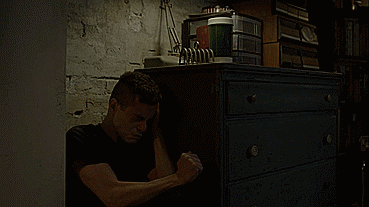
The entire first season Mr. Robot is depicted as another character, akin to Tyler Durden, a wild revolutionary who wants to encrypt the data of the world's largest bank in order to seal the debt records and reset everything back to 0. He starts off appearing in scenes involving the men in black stalking Elliot to mingle him in with the paranoid delusions and eventually begins interacting with him in earnest. Though the reveal is treated as a twist 8 episodes into the show Elliot does accuse the audience of knowing the entire time and he refuses to speak to us for some time, even going as far as to keep secrets from us because he cannot trust us any longer.
It's at this point that I will note that media depictions of DID tend to lean heavily on the phrase "it's a visual medium" and depict ways that characters can see, interact with and communicate with alters/parts in a dramatic setting. Off the top of my head Hulk is about the only form of fiction I've seen where the temptation to do this doesn't take over and even then the old "other face in the mirror" trope shows up there.
So for what it's worth the paranoid thinking and hallucinations are not DID symptoms and typically a person with the condition cannot see or hear their alters. In fact a testing criteria included in the MID exam is to rule out schizophrenia by eliminating the possibility that the voices heard are external or that any hallucinations exist. In Mr. Robot they are likely caused by Elliot's morphine addiction, but he gets clean after season 1 and Mr. Robot is always there.
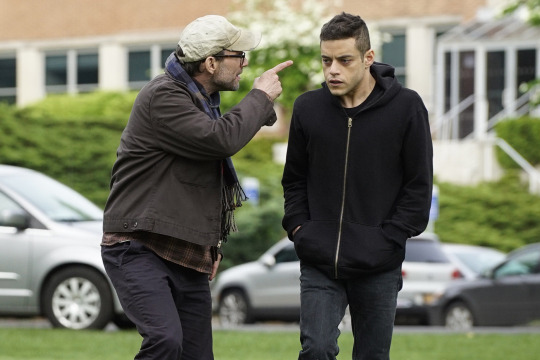
There are some plot elements which I want to talk about but they do spoil the final "twist" of the show. So I want to warn again that anyone in the process of watching should be warned we are getting into entire show spoiler territory.
The Elliot we see in the show is the result of the stress fueled breakdown that Mr. Alderson had 6 months prior to the show starting. The timeline is fuzzy in my head but there were two triggers which set him off and began his condition flaring up (and/or caused him to lean harder into his drug addiction which in turn fueled his condition). The one we know about is that he was locked in a server room and forced to work long into the night on an issue and the already upset and stressed Elliot snapped and had a black-out.
We come to learn that he has had these his whole life but this is the first time such an incident occurred that he couldn't self-justify what had happened. He smashed up a server room, something he felt himself not capable of.
But the second trigger is the more important one.
His sister, Darlene, moved to NYC and started visiting him.

The bigger and better twist of season 1 is that Elliot and Darlene are siblings. This is hidden from Elliot and the audience for the first 7 episodes and her presence is treated much like Marla Singer from Fight Club, of whom she likely contains some inspiration, where she keeps showing up in Elliot's apartment and acting overly familiar with him.
In the earliest episodes when we are learning about Elliot's lonely life he looks at a photograph of himself and his mother at Coney Island. Due to some hallucinations we know that Magda is an abusive mother and screamed at/hit Elliot a lot. We learn more about her in future episodes and she is a truly horrible parent. Likely more than was ever depicted in the show.
The photo is actually of the full Alderson family including Darlene and Edward but is not shown as such until the reveals that Darlene is Elliot's sister and Mr. Robot is modeled after Elliot's father. The photograph is a reference to Back to the Future.
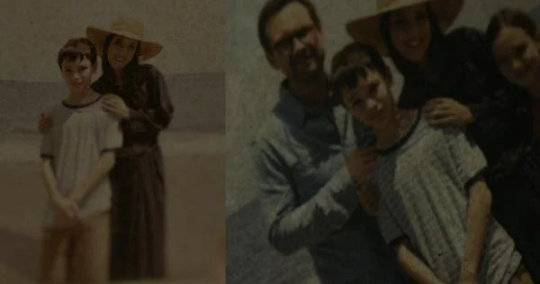
But it also is a fairly good visual representation of self-filtering information, even when it is contradictory in nature. This is common not just in DID but in all forms of CPTSD.
Complex Post-Traumatic Stress Disorder is a condition that develops during prolonged exposure to trauma and makes radical changes to the nervous system. CPTSD is considered a root of DID and it is universal for those diagnosed with DID to have a CPTSD diagnosis also.
One of the ways CPTSD symptoms manifest is "Emotional Avoidance". The nervous system is activated when triggers related to the trauma exist within the person's life. In order to function their brains push away these reminders and naturally avoid interacting with them. This causes those with the condition to become withdrawn, to isolate and to have distorted and often contradicting patterns of thought. For instance Elliot needs connection and safety that he associates with family but his family were his primary abusers and so he edits his memories to focus on positive associations such as a family trip to Coney Island that has become an obsession to him in adulthood. We later learn that Elliot's obsession with movies was born from it being his primary way of connecting with his father... which is fairly relatable.
His positive memories of his parents are held in high regard even though we know that his father "pushed him out of a window" and his mother used to put out cigarette butts on Darlene, tried to force her to commit animal cruelty and is often depicted in hallucinations as beating and screaming at Elliot.
In a case where it is impossible to avoid the traumatic trigger, for instance the return of relative who is a living reminder of his abusive childhood, the individual may begin to dissociate. Dissociation being where a person, overwhelmed by what they are experiencing has a separation from their normal state leading to a disconnect from emotions, sense of self and reality.
Episode 8 in particular contains a visual depiction of it when Elliot is having a quiet meltdown over finding out he has a 2 day deadline and his boss at work has known about the server exploit he installed all along.

(the show often uses the camera in ways to emphasize emotional walls, dissociation and isolation like this. This sequence does so by having hard cuts, shaky cam and frantic pace melt into a gliding slow lull where the background noise filters out and we can share in Elliot's distance from his situation for a moment)
Elliot's form of blocking out is extreme but has half a foot in reality (and half a foot in the logic born from the "twist" ending) in that in order to continue interacting with Darlene he views her as a member of Fsociety and edits out their connection until it is revealed in episode 7.
A small brilliancy about Fsociety is that the entire group is formed around Elliot and Darlene's need for childhood safety. The hacking elements of the show undoubtedly born from 9 year old Elliot spending time at Mr. Robot computer repair with a smile. The anon-mask that the show uses comes from an in-universe movie that Darlene and Elliot watched every Halloween and their base of operations is Coney Island. A place that both siblings seem to associate with safety and happiness...
Which is extra messed up when you factor Season 2's revelation that Darlene was kidnapped while on a family trip to Coney Island.
Darlene's panic attacks, need to feel special and her abusive upbringing are not the topic for this essay, but I wanted to make mention that Magda was such a horrible mother that a 4/5 year old Darlene thinks of being kidnapped from a family trip to Coney Island as one of her most precious childhood memories.
The desire to reach into the past and change things to create an ideal future is a heavy theme of the show and I feel it's important to note that though the Alderson siblings reject Whiterose and her scheme, they are both living in an almost literal fun house distortion of the few unambiguously GOOD childhood memories that they each have and have wrapped them around themselves like a protective blanket.
The plot of season 1 gets a lot more uncomfortable when you realize how much of Fsociety is two traumatized kids recreating positive elements of their childhood and trying to live inside of those memories while lashing out at those who took their father away from them. The entire plan is centered around events from 1995. The show takes place in 2015.
Mr. Robot himself is, of course, the ultimate symbol of that take on events.

Edward Alderson was a monster. He's referred to as such overtly in Elliot's detox fever dream. Everyone asks him who his "monster" is while handing him the key that we learn was to his childhood bedroom. A key that he hid to prevent Edward from entering his room late at night.
Yet throughout the first 3 seasons of the show we are only shown him in context of the positive memories that he and Elliot shared. Elliot was 9 years old when Edward passed away from leukemia.
At a point, Elliot is picked up from school. He has a bruise on his cheek and the scene begins with Edward asking "If I had to guess, you didn't tell Principal Howard your side.", assuring him it's okay to share his side of the story. Because Edward is convincing him to tell his side I am going to assume Elliot got into a fight but it's not impossible to assume that the school pulled Edward in to discuss the signs of physical abuse on the child. Edward would never tell Elliot to tell his side of that story so I assume it was a fight.

It's unclear if Mr. Robot is the one who participated in those fights (we only have 2 confirmed instances of Elliot's alters showing up in childhood. The window incident and the day Edward died) but Edward picks him up and protects him from his mother's wrath and bonds with him during that drive, he reveals his diagnosis to Elliot before inviting him to work with him at the computer repair store. Likely this is what leads to Elliot's hacker skills being born.
A hauntingly similar event in my own life is why I am a photographer.
Given that the majority of Season 1 has Elliot in the dark about his condition we are only given context as to why he is the way he is and see the display of dissociative symptoms which manifest from CPTSD. Mr. Robot existing at all is actually not required for this to be a good depiction of adults who grew up in abusive environments and the way they maladaptively cope.
I also want to give a little praise to the "itch at the back of [Elliot's] head" that shows up when he feels the desire to hack someone or dig deeper and the way he pushes forward with his own will until he calms down enough to let a creeping hesitation overcome him and prevent him from acting.
Passive Influence is part of DID. It's a situation where a "fronting" (that is to say part that is in control at a time) performs an unthinking action or is emotionally swayed by the influence of another part/alter that is not presently conscious. These are one of the biggest ways that the condition flies under the radar for many. When they are close to discovering proof of their condition they will often feel an unconscious push away from it. The phenomenon is fairly easily brushed aside internally as "a gut feeling" or an "impulse" but it's observable under the right conditions.
An instance I can think of in my own life is when our survival part is trying to push people away and our emotional part desperately tries to reach out. I will often find my hand grabbing a person's wrist and clinging tightly to it without even noticing that I've done it.
In the show Elliot is compelled by Mr. Robot when he feels someone is a danger or has a weakness that can be exploited. Part of him knows he needs to do something about it and so he lets himself be guided.
The season ends with The 5/9 Hack succeeding, all the financial data being encrypted and Elliot sent to prison for (minor) hacking charges.
He knows who Mr. Robot is now and he fears him as his enemy.
Season 2 (and the book): Exploration
The first 8 episodes of Season 2 are a filter for those watching the show, many drop off. Personally I love it but I can see why it's not for everyone. Season 2 is much slower than the first and Elliot is in prison for those 8 episodes. He's also imagining that prison is his mother's house.
That daydreaming coping mechanism is largely there to add a fairly unearned sense of mystery to a character development season and make things a little more visually interesting. For the most part I don't really want to focus too much on it or the way Elliot treats "us"/"friend".
The fact is that for this season Mr. Robot and Elliot are in direct conflict but they are feeling out their landscape and trying to find common ground. They are pulling in different directions but they are reacting and responding to one another. The show uses a chess match as a visual symbol of this and in such they are keeping one another in a constant state of check. They are opposed to one another but they are communicating and working things out.
So let's start by looking at the book. The book is a recreation of the in-universe journal that Elliot keeps while he is in prison. We see him writing in it during the show and the entire thing is available, it even includes little ARG elements to let you decode the messages Mr. Robot is receiving from The Dark Army.
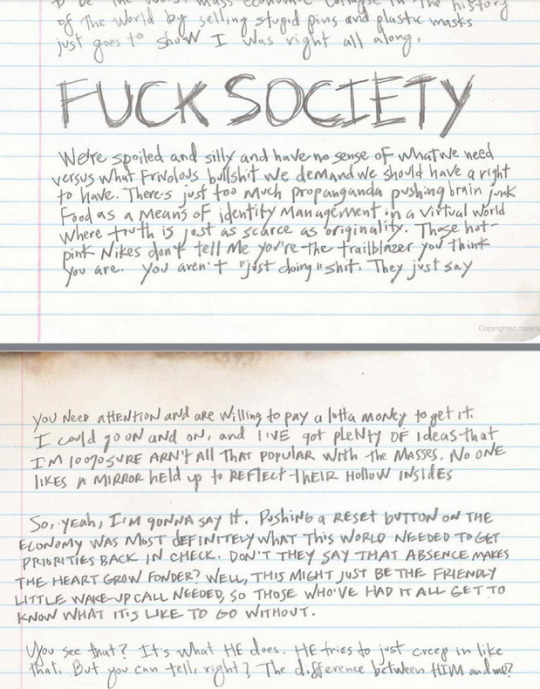
The book is detailed like this and it's possible to note when Elliot's handwriting turns into Mr. Robot's handwriting. There are even points where there is "blended" handwriting. It's easy to spot in the above image because Mr. Robot writes with a heavy hand and in all caps where Elliot is soft and uses lower case, in the top line of the second page "you NeeD atteNtioN aNd aRe Willing to pay a lotta MoNey to get it." you can see Elliot slipping from one headspace to another while becoming upset at society.
Even still if you look above the FUCK SOCIETY image you see Elliot's calmer handwriting as clear and flowing.
When we were in denial of our condition we poured through journal after journal and chatlog after chatlog hunting for evidence to prove or disprove the theory.
It was when I looked at our old gaming journals (we took notes in pen/pencil live during TTRPG sessions because memory issues are gonna memory issues) that we noticed similar. Cursive used in some phrases, individual letters separate on another, the letters g and y getting curled at times and not at other times.
Subtler than what is displayed above but no less real.
Season 2 introduces us to Ray the warden brilliantly played by Craig Robinson. He empathizes with Elliot because he speaks to his dead wife as a means of coping with grief and assumes that Elliot is the same.
He offers Elliot guidance by asking him to play chess "against himself" and this leads to Elliot and Mr. Robot playing endless games of stalemate against one another with deletion on the line for the loser. It's the same brain and neither side wants to lose (nor do they truly want to win, Elliot admits as much in Season 3 that he likes having Mr. Robot and misses him when he's not around) and as noted above with passive influence, the games are always guided to end in a stalemate because no matter how opposed they are as forces, they both want the same things.
So... how about the Sitcom episode?
Elliot breaks his promise to Ray and looks at the website that he is tasked with doing tech support on. It's--- not good.
Ray uses a combination of crooked cops and convicted Neo-Nazis to have Elliot beaten into submission so he won't report what he saw. Elliot cannot handle this and has a mental break and wakes up in a 90s 4 camera sitcom world.

Alf is there. Because old episodes of Alf are playing in the medical ward at the time Elliot is being treated for his wounds.
The entire time he is taking a beating Mr. Robot is protecting Elliot by fronting and forcing him into an inner-world fantasy.
Okay... so Inner-Worlds.
In the show we actually had one of these in Season 1 during the detox trip but I want to talk about it now and round back and talk more in Season 4.
Inner-Worlds are a thing within DID treatment. Emphasis on the word treatment. It's one of the more commonly misunderstood things within discussion on the condition because it's regularly reported as part of the experiences within those who are diagnosed with DID but it's important to know that the existence of the diagnosis indicates the existence of treatment.
During any adapted 3 or 4 phase trauma treatment program that includes parts work, whether this be Internal Family Systems model which is used for individuals who do not have DID or system mapping and stabilization for those who do, the patient must work on creating a "meeting" space to visualize (or sense out emotionally for those with aphantasia) and much of the work of developing safety and structure within comes from filling that space with comforts and generating communication between parts.
I'll talk more on the "conference table" in Season 4.
It is possible for those not going through therapy to create one outside of the context of a therapeutic alliance but the creation of one is an intentional act. Not something that comes free with your childhood trauma.
Elliot's trip to the inner-world keeps him from experiencing any of the beating that the body is receiving and at the end Mr. Robot earnestly says he only wanted to take the punches for Elliot, nothing more. Elliot falls against him, tearful and whimpers out "Thank you" before we are given the flashback of the day Edward picked up 9 year old Elliot from school after the fight and confesses his leukemia.
For the record, my heart swells every time I see Mr. Robot acting as a protector.
So, let's talk S2E9 and the "blending" incident.
Blending is what happens when two parts/alters are co-conscious and are present enough that they are sharing control of the body. It's an uncomfortable experience. Co-Consciousness means that more than one part/alter is actively perceiving the world at any given time.
It's more complicated than binary yes/no. Every one of these experiences exists on a spectrum and no two people with the condition experience it quite the same way but there are levels of presence that one has.
The following is me talking more from anecdotes and personal experience than textbooks. I like to be clear when I'm not being academic because I do not want to spread misinformation in my arbitrary analysis of TV shows that will get 20 notes on Tumblr Dot Com.
Front is to be driving the body, to have your inner monologue playing (if you have one, most people do, but it's not a given) and have your emotions interact with the nervous system if you are grounded enough to feel your experiences. As I said, it's a spectrum. Everyone gets dissociated at times and can just go into auto-pilot or a trance. That all still counts as being in front.
To be conscious but not front is to exist in an emotionally reactive state. If Fronting is driving then co-consciousness is to be in the passenger seat.
It's truly difficult to describe and my therapist doesn't even fully comprehend it despite her being the one who educates me on these topics. Presently as I type this I can only feel one of our system (5 parts) active and "with" me right now. She's not speaking but she's reacting. I can feel her apprehension to us typing this much about our personal life, little flits of paranoid thinking that we'll get anon-hate or that people from our former life will see this and judge us. It's a presence and exists on a gradient. She's "awake" right now but I do not consider her fully "co-con" because if I asked her to tell me what she thinks about this sentence I can feel an emotional reaction (apprehension) but not a direct answer akin to "I think you should edit out references to our journal and focus on talking about the show" (which is what I imagine she would say right now). That's the spectrum.
Closer to the front a part/alter is the more direct communication happens.
There's also "asleep" and "dormant" when they are unresponsive. Pretty self explanatory. Elliot's system has 5 parts(plus "friend") and until Season 4 we only really see Mr. Robot and the main character version of Elliot. Magda and Young Elliot show up in hallucinations in Season 1 and Young Elliot is co-con in Season 4. Magda never shows up outside of emotional flashbacks and the inner-world.
So after Elliot and Mr. Robot combine forces (though Mr. Robot is still working with the Dark Army and is trying to move in secret) they have moments where they rapidly switch and cannot keep straight who is fronting at any given time.
There's a scene where Elliot is in another room thinking to "friend" when he hears an argument in the next room and realizes Mr. Robot is in the argument. As he walks in, Mr. Robot is surprised to see that Elliot is aware when he is fronting and he trails off and they switch.
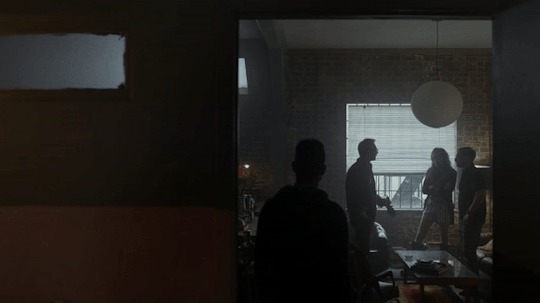
Mr. Robot says that something feels off about how they are acting and that they feel like they're overheating.
A later scene depicts Elliot phasing out mid-conversation on the subway and picturing himself in the next car observing Mr. Robot talking to Cisco while a passenger plays erratic music on a keyboard.
That is such a horrifyingly accurate depiction of something we live with that I was stunned to see it on screen. I've included it in some of my stories that go over living with these experiences but the idea is when we are stressed out, can't keep our head straight and are blended like this we tend to have snippets of music playing over and over in our head. We also get what I refer to as "static" and that seems to be relatable in support groups.
A++ for the show depicting something about the DID experience that simply does not get spoken about outside of the spaces of people dealing with it. It was the moment I knew they actually spoke to people who experience this stuff and did proper research that wasn't just media depictions and medical textbooks.
The final part of Season 2's wild ride I want to talk about is the "lucid dreaming" bit.
Mind awake. Body asleep. Mind awake. Body asleep.
This again goes into Overt DID which I cannot comment on as much as covert depictions but the idea is that Elliot trains himself to remain awake when Mr. Robot takes over. We have seen from the blending experience that he is starting to remain when Mr. Robot is active and so he tries to force himself to stay when Mr. Robot is active.
In therapy this would be achieved through trust, communication and awareness. It's said in communities that systems tend to become more overt as they go through treatment as they are able to identify lines, parts can advocate for themselves and there's better understanding of what "self" means for every alter.
In my experience there's also an element of trying to pretend to be consistent and whole. We were coming out transgender when our therapist guided us towards DID diagnosis and there was a lot of tearing ourselves apart because we needed to act in a certain way for our safety and inability to do so put us at risk of being targeted. In accepting our system we have stopped trying to be the same individual and that has lead to a more overt presentation. As I tell my therapist "we need to act out our gender expression anyway. Every action we take is a performance."
That is to say, Mr. Robot has never attempted to maintain the illusion that he is Elliot Alderson (albeit he never identifies himself. He's even surprised to learn that Elliot calls him that) and Elliot doesn't even know he is "The Mastermind".
In opting to remain hidden and conscious he gains a greater degree of control and agency in his situation.
These things get easier as you learn your condition, build system trust and allow yourself to experience that which you feel comfortable experiencing. With the example of the beating earlier, Mr. Robot shut Elliot out and took the beating for him and Elliot resisted but ultimately did not want to be present. In this episode he learns that if he wishes he could have pushed through and been there and experienced everything, albeit as a passenger rather than the driver.
Therapy also teaches how to "go into the back room" to maintain stability. A technique that lets you volunteer to not be involved in a situation. My system all use this whenever I (Dawn) perform erotic intimacy of any kind. They cannot handle the thought of associating with those acts and prior to treatment it would emotionally disregulate our nervous system if parts that couldn't handle the concept were to be present during those moments because parts of me would be trying to dissociate while I am trying to act. It would either trigger a switch, cause blending or make a part shut down and become unresponsive for a large period of time- one of our partners actually discovered our system this way. She saw us shut down during a scene and realized it wasn't just a "mood swing" as we had insisted.
Elliot learns how to intentionally open up and be present when Mr. Robot is active and because Plot happens he is shot and decides to use this skill to close himself off and create a stronger divide between parts.
Season 3: Rejection
If Season 2 was the pair working things out on a chess match where they keep one another in check then Season 3 is after Elliot has tossed the board and decided to shut Mr. Robot out completely.
The arc words are "battling in our own voids", in Season 1 Mr. Robot was always aware of what Elliot was doing but Elliot was unaware of Mr. Robot's actions and in Season 2 they were fairly co-conscious to the point of overheating. Season 3 the connection is shut down. Mr. Robot has no concept of what Elliot is doing and Elliot no concept of what Mr. Robot is doing.
This goes back to the Overt/Covert thing mentioned at the start. It's a rare thing even within a rare disorder to have that level of amnesia barriers between parts and so I can't really comment on accuracy. It's a frustrating season for me in that regard because Season 2 was doing so well at depicting something that I have lived through that going back to Fight Club tropes was fairly disappointing to me.
Season 3 is great by the way. It's a debate on if 3 or 4 is the best but it's close enough that there is a debate.
The real meat of the discussion, spare for the events of the final episode where they reconcile, is in how other people treat them and talk about their condition.
Angela Moss is Elliot's childhood best friend and also lost a parent to the disaster that claimed Edward Alderson's life. She discovered Elliot's condition during his breakdown in S1E8 and was brainwashed by the show villain Whiterose in S2E11 (I have a write-up of the psychological principals at play with the brainwashing here).
In Season 3 she acts as Elliot/Mr. Robot's handler and is responsible for helping Mr. Robot continue his hacktivist terrorism without Elliot finding out. She betrays Elliot and exploits his condition. She also tells people about it without his knowledge or consent, which is pretty fucking monstrous in my eyes.
Don't out a person. Just don't do it.
When Mr. Robot asks how she can tell who she's talking to she responds "Your eyes. You're never trying to look away." which is accurate enough that I messaged my girlfriend to be sappy and grateful towards her as the first time she noticed our condition she told me it was our eyes.
From a 2022 IM chat, shared with permission:
"it's ... well, it's [...] your eyes soften, kind of, when going to Cammie. Dawn has this piercing gaze, like she's looking right into my heart and soul. Camden is just very alert, noticing so many things but not the level of piercing. Cammie... her gaze is softer. More focused, but in a ... drinking everything in, rather than seeking it out sort of way"
and added today when I asked for permission to share the quote:
"(for the record, Craig draws his eyebrows down in a particular way that makes his gaze intense in a good way)"
The show works as hard as it can to never let the audience wonder who they are seeing on screen at any time. Most scenes where Rami Malek is depicting Mr. Robot it is a brief perspective view to remind us what the other characters are seeing before switching back to Christian Slater playing the character. There are a few scenes which involve Rami playing the character for a full sequence. One is the context for a flashback where we see a scene Slater performed through another character's eyes where they see Malek.
The others usually involve us being in Darlene's perspective to highlight her unease and uncertainty of what is happening with her brother.
The only scene where it is ever treated as a surprise is when Darlene plants a bug on Elliot's computer while staying overnight and is roughly interrogated by "Elliot", only to realize midway through the conversation "Jesus. It's you".
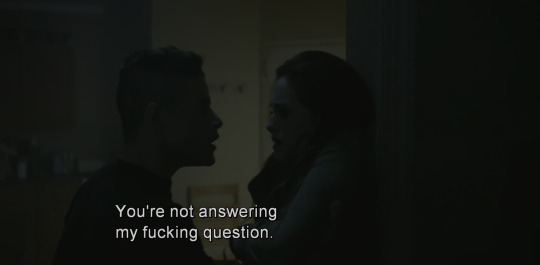
The camera cuts back to reveal it has been Mr. Robot the entire scene. They avoid that trick throughout the show so it has large impact when it actually happens.
I feel like that scene (as well as the scene where Elliot wears the real Mr. Robot jacket and gives birth to the 2 Stage plan to take down Evil Corp) are important for reminding that no matter how differently Malek and Slater play their roles, to an outside observer they are the same person and when he acts "out of character" it could easily just be an emotional outburst.
Incidentally you can see the physicality of the acting if you go back and watch it again.
The end of the season has Elliot, betrayed, alone and terrified for the safety of his sister; finally reach out to Mr. Robot and open a dialogue.
He even goes out of his way to have this discussion on the Ferris Wheel at Coney Island both as a Season 1 callback and as a sign of trust. Elliot admits in this conversation that he missed Mr. Robot while he shut him out and wants him to be part of his life and in the season finale Mr. Robot says that he wants the two of them to keep talking.
Elliot also finds out that the window incident wasn't his dad pushing him out of a window. They jumped. Elliot asks in a kind and soft way to Mr. Robot, representing both his protector and an element of the loving father he wished he had, "did you know?"
Mr. Robot, the one who jumped. The one who wanted to protect Elliot from Edward says nothing. But he finally feels an alliance form with Elliot.
The road to healing finally has opened.
Season 4: Integration and Fusion
So let's address the elephant in the room right away. The show uses the word "real" to describe the Elliot who existed before the show started and considers him to be the only legitimate alter. There is enough wiggle room within the show to think that is in-universe ignorance but the show does nothing to prevent the fumble at the finish line.
I want to say upfront and before I start dissecting this season that outdated models of DID believed that there was a crack formed in a person's sense of self and that healing involved restoring the identity prior to the crack.
This is 100% UNTRUE and it upsets me that people once believed it. DID is formed in childhood during a time of a person's life (between ages 4-9) where the child is taking in data from their surroundings and integrating it into their socialized survival mechanics to form a personality. The child is working out what traits it can exhibit to receive nurture, care and protection from other humans and will adapt to those processes. Attachment Theory goes into greater detail about how this relates to the formation of psychological disorders, especially personality disorders.
For a traumatized child they will find that their environments do not offer consistent and reliable safety and thus they are unable to adapt to a version of their reality where they are able to maintain stable safety. This may be horrifying forms of physical, emotional and sexual abuse placed upon a child and is often depicted as such but it can also be a confused child trying to get affection from a cold and distant parent or having a parent who abuses alcohol and becomes inconsistent in their ability to give affection and care. Child psychology is a heavy and depressing field, sadly.
The result is that the child never forms a permanent sense of identity. This is a large factor in the formation of Borderline Personality Disorder and is why DID and BPD are so often thrown together within medical treatment and diagnosis. It's at the point of which when my therapist gave me our diagnosis she presented a clinical list of "myths" regarding DID and "BPD is the same thing as DID" was 5 on the list of 6.
The point of this detour is to say that there is no original self. A person who has DID never managed to form a stable sense of identity in childhood and thus they find themselves acting as chameleons in their day-to-day life, adapting to what they feel they need to become in order to receive the things they need from their surroundings. It's why there is a stigma in the BPD community over the concept of being "manipulative". In reality people with that condition are unconsciously adapting to their environment as a survival mechanism. With DID the added layer of dissociation is there to help the self function even when they are forced to interact with materials that are incompatible with their ability to function.
Pre-show Elliot was living a fairly comfortable life but his emotional needs were not met and at the time he was alienated from his sister. He was miserable and lived in a society that he felt was crumbling. His daydreaming gave birth to "The Mastermind" to remove the threats from his reality and Mr. Robot who had been there all along went into Protective Sicko Mode and decided to expedite the process in a way only a protector's morality could.
We'll get into system roles a little later.
The point is that day-to-day life Elliot (Janina Fisher's book "Healing the Fragmented Self" refers to the part untouched by trauma as the "going about daily life" part) is not Real. He is not The Original. Those terms do not exist and are meaningless in this space.
True/Real/Orignal-Elliot is as much a construct as Mr. Robot. He's a version of Elliot who does not have to think about the trauma, he can just live a happy normal life. The kind that Elliot speaks often and derisively about in Season 1.

With that out of the way, I'm going to ignore the bad use of language and talk only about what is depicted on the screen and not said out loud. Because if you remove the misconception about real/original from the mixture, this is a perfect depiction of final fusion model healing.
Season 4 introduces us to the conference table in the inner world. A conference table is a therapeutic technique used in trauma therapy where you bring the alters/parts to a conference. The idea is that it needs to be a neutral ground where everyone is comfortable and able to share their thoughts and ideas. With practice it can be a space one can close their eyes and imagine, seeing their system and allowing communication to happen between parts.
Mine is based on the Minerals Gallery in the Natural History Museum in London. I refer to it as The Library. You didn't need to know that but I didn't want to discuss this section without mentioning it.
Elliot's is the conference room in Evil Corp where he and Tyrell spoke in the first episode.

Interestingly enough there are only 4 seats in this set. I'm not sure what the implication is here as in the scene depicted above Magda (Persecutor Alter) is scolding Young Elliot (Child Alter) for sitting in a chair that isn't his. They mention all 3 alters who are not present (Elliot, Mr. Robot and The Other One).
My thought is that this is the show going all in on the idea that Elliot ("Real") is not an alter and does not take a seat at the table. Which I have issues with.
I'll note as I did with the inner-world that this is a therapy technique and not something Elliot would just have in his mind. It's an accurate depiction of DID treatment but Elliot isn't being treated for DID. Krista is no way near close enough to be able to help Elliot. She's wonderful and deserves the world and more for how she handles things in this season but she's in the pre-stabilization phase of therapy where she knows more than Elliot is willing to accept and needs to wait for him to come around.
Speaking of Krista. Episode 7 is the greatest hour of television rivaled only by Ozymandias from Breaking Bad and the M*A*S*H finale. At present it has a 9.9 on IMDB.
The episode is structured as a bottle episode in way of a 5 act play depicting the stages of grief. This is the episode where Elliot peels back to dissociative layers and understands the truth. The truth of what his father did.
I won't type it.
I don't need to.
The next episode involves Elliot seeing Young Elliot and following him to a museum exhibit with a model of Manhattan. In Season 1 when Elliot had his psychotic break after realizing Darlene is his sister Darlene and Angela checked this location stating it was a place he used to go in times of crisis.
It turns out when he was young Elliot hid the key to his bedroom here to prevent Edward from getting in. All these years later adult Elliot (or "The Mastermind" if you prefer, which I do not) discovers it and has a heart-to-heart with his younger self, screaming into the emptiness that he's sorry for not protecting him. Sorry for letting him get hurt.
The scene is lit in the golden hues that symbolize safety in this show. The final season also takes place during Christmas in New York so it gets to show off that color palette more often which is great for symbolism and aesthetic.
Young Elliot shows that the act of hiding the key from their father was protecting him. It was fighting back. Sometimes surviving is the best you can do and you need to forgive yourself for not being able to do more.
God I love this show so much.
That episode ends with the scene I most want to just overtly show off to an audience.
youtube
I already loved the show. The final episode may have broken my heart a little with its talk of "Real" but this scene? This scene gets it.
Prior to the above video clip Mr. Robot cautiously approaches and says "Hey, kiddo". Something he always says. It's who he is. Regardless of anything else he, Mr. Robot, is designed from the father Elliot wishes he had and when he hears Mr. Robot-- no Edward's voice he tenses up in terror, allowing the above scene to take place with Mr. Robot so scared that he has failed as a protector by allowing Elliot to remember and that he cannot be there for him any longer because of who he is based off of.
Those with the condition commonly create alters who are based on the traits of those in the child's life at the time the symptoms developed. I... have experience.
The lines I want to focus on the most are:
Mr Robot: If I could go back in time and change everything that happened to you... just make it all go away...
Elliot: Then I wouldn't be me... *He turns to finally look at Mr. Robot* ...and I wouldn't have you.
The final arc of the show is where the "Mastermind" twist takes center stage and Elliot enters his inner-world and finds out that he created a peaceful reality for "Real" Elliot to exist in so that he is unharmed by the horrors of the world that is crumbling in reality. Mr. Robot, as a protector, wanted to expedite the whole hack and destruction of capitalism in order to rescue "Real" Elliot from the inner-world prison. In time he came to accept "Mastermind" as a part of the whole and not a rogue alter who was endangering the body and their "Host".
S4E13 lays it all down. An imagined version of Krista speaks directly to Elliot and explains the system and their functions. Mr. Robot a father and protector who could prevent Elliot from intolerable situations. Magda, a persecutor who blamed Elliot for the abuse. Young Elliot, who Elliot could push the traumatic situations on, a common thing that many do unconsciously in CPTSD situations, dissociating from the person the trauma happened to, disconnecting until they are just another version of self.
Elliot then says "I guess she doesn't know about you." referring to us, the audience.
Krista(*) looks into the camera and addresses us directly, calling us the voyeurs who pretend we're not a part of it even though we have been here for it all. She even claims we are on her side in getting "Mastermind" to accept he is a constructed personality who was there to lash out at the society that caused him so much pain.
"You loved him so much you wanted to keep him safe, no matter the cost."
The episode ends with "Mastermind" Elliot waking up in a hospital and reuniting with Darlene only to realize that she has known the entire time that the person we have been following throughout the show wasn't her "real" brother.
...and god damn it I hate this element of the show so much.
I'll accept that they had very little time to clean things up and needed to get a way to have Mastermind agree to the fusion. I'll even demonize Darlene and say she was being selfish and ignorant in saying something hurtful because she missed the version of her brother that existed before Fsociety.
But Our version of Elliot says that he loves her and she doesn't reply. Her disappointment and resignation causes Our Elliot to go back inside and agree to the fusion.
The show ends in a first person perspective of Darlene seeing her "real" brother wake up and that's it. I'm glad we never actually see "Real" Elliot, that feels fitting.
Here's the thing about that last minute fumble though.
Let's talk about Integration and Fusion. They are different things.
Integration is when dissociative barriers come down. The system is stabilized to the point of which the alters are capable of communicating openly, sharing thoughts, memories and experiences and every part has the ability to opt in or out as life goes on.
"Functional Multiplicity" is what happens when a system is in harmony, no memories are being withheld and the system is able to go about everyday life with minimal disruption or disregulation. It is a valid goal for trauma therapy and there's a decent amount of medical stigma around it being used as the goal and not a step towards the goal. Many clinicians prioritize the appearance of normalcy over the function of the individual(s).
Fusion is when you go the extra step and take this communication and sharing of memory and experience and as you tore down the dissociative barriers you tear away the division between parts.
A system is made up of parts that make up a whole person and Fusion is the process of all parts uniting to "become" that whole person. It is a valid and normal goal for treatment. It shouldn't be held up as the only legitimate method of healing but it shouldn't be demonized for being an option. I say this because I have seen some people in support communities get real upset when the topic comes up.
The final sequence of the show, prior to Elliot opening his eyes, involves the system at the inner-world conference table agreeing to go through with it and walking towards a cinema screen. Elliot says this will only work if we go too.
The family (and audience) sit down in the movie theatre and memories flood onto the screen and pour out until all experiences and emotions are shared in one pool and Elliot Alderson opens his eyes with all 5(+audience) alters fused into one.
It was almost perfect if only Darlene hadn't have rejected the "not real" brother.
The cinema screen projecting memories, all the thoughts and experiences being shared as the Alderson System accept their parts in the whole and agree to the process? It was a beautiful visualization of a healing journey.
There are imperfect moments here and there. There are great moments I skipped over such as S3E8 (I'm not up for talking about Self-Deletion today) but all in all it's the best depiction of DID for a main character we'll likely get on TV. It's a whole and complete narrative and I love it so much. It makes me feel seen.
#dawn posting#mr robot#dissociative identity disorder#elliot alderson#did#plurality#domo arigato mr alderson#media myself and i#watch me post my trauma in public#Youtube#media essays
69 notes
·
View notes
Text
Is antitrust anti-labor?
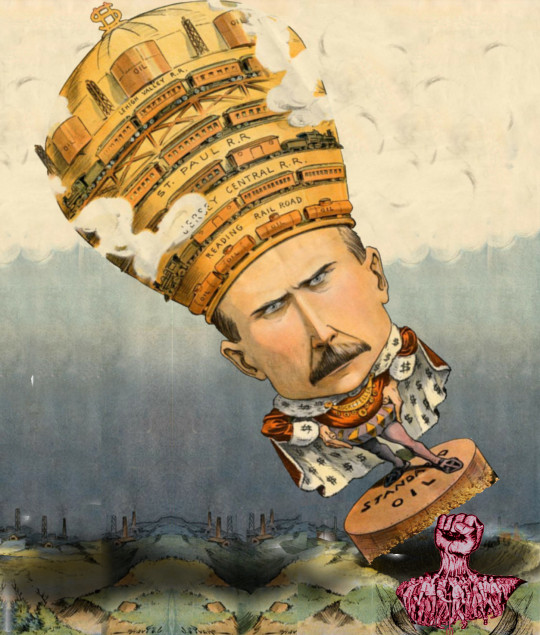
If you find the word “antitrust” has a dusty, old-fashioned feel, that’s only to be expected — after all, the word has its origins in the late 19th century, when the first billionaire was created: John D Rockefeller, who formed a “trust” with his oil industry competitors, through which they all agreed to stop competing with one another so they could concentrate on extracting more from their workers and their customers.
If you’d like an essay-formatted version of this post to read or share, here’s a link to it on pluralistic.net, my surveillance-free, ad-free, tracker-free blog:
https://pluralistic.net/2023/04/14/aiming-at-dollars/#not-men
Trusts were an incredibly successful business structure. A bunch of competing companies would be sold to a new holding company (“the trust”), and the owners of those old standalone companies would get stock in this new trust. The trust would operate as a single entity, hiking prices and suppressing wages. If anyone tried fight the trust with a new, independent company, the trust could freeze them out, by selling goods below cost, or by doing exclusive deals with key suppliers and customers, or both. Once a trust sewed up an industry, no one could compete. The trust barons were rulers for life.
The first successful trust was Rockefeller’s Standard Oil, which amassed a 90% share of all US oil. Other “capitalists” got in on the game, forming the Cotton Seed Oil Trust (75% market share), the Sugar Trust (85%). Then came the Whiskey Trust and the Beef Trust. America was becoming a planned economy, run by a handful of unelected “industrialists” with lifetime appointments and the power to choose their successors.
A century after overthrowing the King, America had new kings: “kings over the production, transportation and sale of the necessities of life”. That’s how Senator John Sherman described the situation in 1890, when he was campaigning for the passage of the Sherman Act, the first “anti-trust” act. The Sherman Act wasn’t the first time American lawmakers tried to protect competition, but it was the first law passed after the failure of competition law led to the hijacking of the nation by people Sherman called the “autocrats of trade.”
https://marker.medium.com/we-should-not-endure-a-king-dfef34628153
The Sherman Act — and its successors, like the Clayton Act, are landmark laws in that they explicitly seek to protect workers and customers from corporate power. Antitrust is about making sure that no corporation gets so powerful that it’s too big to fail, nor too big to jail — that a company can’t get so big that it subverts the political process, capturing its own regulators:
https://doctorow.medium.com/small-government-fd5870a9462e
If American workers are derided as “temporarily embarrassed millionaires” who won’t join the fight against the rich because they assume they’ll soon join their ranks, then the American rich are “temporarily embarrassed aristocrats” who would welcome hereditary rule, provided they got to found one of the noble families. The goal of the American elite has always been to create a vast and durable dynasty, wealth so vast and well-insulated that even the most Habsburg-jawed failson can’t piss it away.
The American elite has always hated antitrust. In the 1980s, Ronald Reagan, abetted by Robert Bork and his co-conspirators at the Chicago School of Economics gutted antitrust through something called the “consumer welfare standard,” which ended anti-monopoly enforcement except in instances where price hikes could be directly and unarguably attributed to market power, which is, basically, never.
It’s been 40 years since Reagan took antitrust out behind the Lincoln Monument and shot it in the guts, and America has turned into the kind of aristocratic kleptocracy that Sherman railed against, where “great families” control the nation’s wealth and politics and even its Supreme Court judges:
https://pluralistic.net/2023/04/06/clarence-thomas/#harlan-crow
Anything that can’t go on forever will eventually stop. Monopoly threatens the living standards, health, freedom and prosperity of nearly every person in America. The undeniable enshittification of the country by its guillotine-ready finance ghouls, tech bros and pharma profiteers has led to a resurgence in antitrust, and a complete renewal of the @FTC and @JusticeATR:
https://www.eff.org/deeplinks/2021/08/party-its-1979-og-antitrust-back-baby
Key to the new and vibrant FTC is Commissioner Alvaro Bedoya, who, along with Commissioner Rebecca SlaughterFTC and Chairwoman Lina Khan, is part of the Democratic majority on the Commission. Bedoya has a background in tech and privacy and civil rights, and is a longtime advocate against predatory finance. He’s also a law professor and a sprightly scholarly writer.
Earlier this week, Bedoya gave a prepared speech for the Utah Project on Antitrust and Consumer Protection conference, entitled “Aiming at Dollars, Not Men.” It’s a banger:
https://www.ftc.gov/system/files/ftc_gov/pdf/bedoya-aiming-dollars-not-men.pdf
Criticisms of the new antitrust don’t just come from America’s oligarchs — the labor movement is skeptical of antitrust as well, and with good cause. Antitrust law prohibits collusion among businesses to raise prices, and at many junctures since the passage of the Sherman Act, judges have willfully perverted antitrust to punish labor organizers, treating workers demanding better working conditions as if they were Rockefeller and his cronies conspiring to raise prices.
This is the subject of Bedoya’s speech, whose transcript is painstakingly footnoted, and whose text makes it crystal clear that this is not what antitrust is for, and we should not tolerate its perversion in service to crushing worker power. The title comes from a 1914 remark by Democratic Congressman Thomas Konop, who said, of antitrust: “We are aiming at the gigantic trusts and combinations of capital and not at
associations of men for the betterment of their condition. We are aiming at the dollars and not at men.”
Konop was arguing for the passage of the Clayton Act, a successor to the Sherman Act, which was passed in part because judges refused to enforce the Sherman Act according to its plain language and its legislative intent, and kept using it against workers. In 1892, two years after the Sherman Act’s passage, it was used to crush the New Orleans General Strike, an interracial uprising against labor exploitation from longshoremen to printers to carpenters to hearse drivers.
Bosses went to a federal judge asking for an injunction against the strike. Though the judge admitted that the Sherman Act was designed to fight “the evils of massed capital,” he still issued the injunction.
The Sherman Act was used to clobber the Pullman Porters union, which organized Black workers who served on the Pullman cars on America’s railroads. The workers struck in 1894, after a 25% wage-cut, and they complained that they could no longer afford to eat and feed their families, so George Pullman fired them all. The workers struck, led by Eugene Debs. Pullman argued that the strike violated the Sherman Act. The Supreme Court voted 9:0 for Pullman, ordered the strike called off, and put Debs in prison.
In 1902, mercury-sickened hatters in Danbury, CT demanded better working conditions — after just a few years on the job, hatters would be disabled for life with mercury poisoning, with such bad tremors they couldn’t even feed themselves. 250 hatters at the DE Loewe company tried to unionize. Loewe sued them under the Sherman Act, and went to the Supreme Court, who awarded Loewe $6.8m in today’s money, which allowed Loewe to seize his former workers’ homes.
This is what sent Congress back to the drawing board to pass the Clayton Act. Though the Sherman Act was clear that it was about trustbusting, the courts kept interpreting it as a charter for union-busting. The Clayton Act explicitly permits workers to form unions, call for boycotts, and to organize sympathy strikes.
They made all this abundantly clear: writing in language so plain that judges had to understand the legislative intent. And yet…judges still managed to misread the Clayton Act, using it to block 2,100 strikes in the 1920s. It appears that passing the Clayton Act did not save a single strike that would have been killed by the bad (and bad faith) Sherman Act precedents that led to the Clayton Act in the first place.
The extent to which greedy bosses used the Clayton Act to attack their workers is genuinely ghastly. Bedoya describes one coal strike, against the Red Jacket Coal Company of Mingo, WV. The mine’s profits had grown by 600%, but workers’ wages weren’t keeping up with inflation. The miners sought a raise of $0.10 on the $0.66 they got paid for ever carload of coal they mined. The company didn’t even pay the workers with real money — just “company scrip”: coupons that could only be spent at the company store. Red Jacket gave its workers a $0.09/car raise — and raised prices at the company store by $0.25/item.
The workers struck, Red Jacket sued. The Fourth Circuit refused to apply the Clayton Act, following a precedent from a case called Duplex Printing that held that the Clayton Act only applied to people who stood “in the proximate relation of employer and employee.”
Congress was pissed. They passed the Norris-LaGuardia Act of 1932, with LaGuardia spitting about judges who “willfully disobeyed the law…emasculating it, taking out the meaning intended by Congress, making the law absolutely destructive of Congress’s intent.” Norris-LaGuardia creates an antitrust exemption for labor that applies “regardless of whether the disputants stand in the proximate relation of employer and employee.” So, basically: “CONGRESS TO JUDGES, GET BENT.”
And yet, judges still found ways to use antitrust as a cudgel to beat up workers. In Columbia River Packers, the court held that fishermen weren’t protected by the exemption for workers, because they were selling “commodities” (e.g. fish) not their labor. Presumably, the fish just leapt into the boats without anyone doing any work.
The willingness of enforcers to misread antitrust continued down through the ages. In 1999, the FTC destroyed the hopes of the some of the country’s most abused workers: “independent” port truckers, who worked 80 hours/week and still couldn’t pay the bills. Truckers were only paid to move trailers around the ports, but they were required to do hours and hours of unpaid work — loading containers, hauling equipment for repair, all for free. The truckers tried to organize a union — and the FTC subpoenaed the organizers for an investigation of price-fixing.
But the problem wasn’t with the laws. It was with judges who set precedents that — as LaGuardia said, “willfully disobeyed the law…emasculating it, taking out the meaning intended by Congress, making the law absolutely destructive of Congress’s intent.”
Congress passed laws to strengthen workers and judges — temporarily embarrassed aristocrats — simply acted as if the law was intended to smash workers. But by 2016, judges had it figured out. That’s when jockeys at the Camarero racetrack in Canóvana, Puerto Rico went on strike, demanding pay parity with their mainland peers — Puerto Rican jockeys got $20 to risk their lives riding, a fifth of what riders on the mainland received.
Predictably, the horse owners and racetrack sued. The jockeys lost in the lower court, and the court ordered the jockeys to pay the owners and the track a million dollars. They even sued the jockeys’ spouses, so that they could go after their paychecks to get that million bucks.
The case went to the First Circuit appeals court and Judge Sandra Lynch said: you know what, it doesn’t matter if the jockeys are employers or contractors. It doesn’t matter if they sell a commodity or their labor. The jockeys have the right to strike, period. That’s what the Clayton Act says. She overturned the lower court and threw out the fines.
As Bedoya says, antitrust is “law written to rein in the oil trust, the sugar trust, the beef trust…the gigantic trusts and combinations of capital…dollars and not at men.” Congress made that plain, “not once, not twice, but three times, each time in a louder and clearer
voice.”
Bedoya, part of the FTC’s Democratic majority, finishes: “Congress has made it clear that worker organizing and collective bargaining are not violations of the antitrust laws. When I vote, when I consider investigations and policy matters, that history will guide me.”
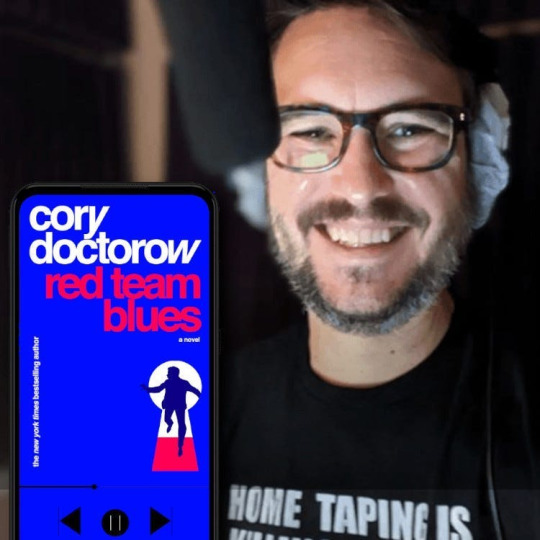
There's only three days left in the Kickstarter campaign for the audiobook of my next novel, a post-cyberpunk anti-finance finance thriller about Silicon Valley scams called Red Team Blues. Amazon's Audible refuses to carry my audiobooks because they're DRM free, but crowdfunding makes them possible.
#pluralistic#jockeys#antitrust#labor#history#judicial overreach#Alvaro Bedoya#consumer welfare standard#trustbusting#sherman act#new orleans general strike of 1892#pullman union#pullman porters#eugene debs#mad hatters#danbury hatters#clayton act#red jacket coal company#Fiorello LaGuardia#Norris-LaGuardia Act#duplex printing#Columbia River Packers#puerto rico#Camarero racetrack
219 notes
·
View notes
Text
I always find the 'semiotics' or symbolic language of media interesting from an evolutionary perspective. Recently online there was a bit of a discussion about run cycles in animation; a guide to running written by Hayao Miyazaki from back in 1980 for which we had the text due to its inclusion in collected-writings book Starting Point has been missing its original accompanying visuals for all this time. Someone (Rebekah Machemer) found and scanned those drawings so now we have the complete work:

Very cool stuff, and really great to recover any lost production media like this. In the essay itself Miyazaki gets a bit philosophical - why care about running animation at all?
Above all what is most important is what one wants to express through the act of running…Men of strong resolve, who are wearing heavy armor and carrying swords, should run in a way that weak extras cannot. The running of surging masses on fire with anger, the running of a child doing his best to hold back tears until he reaches his house, the running of a heroine who has forsaken everything but the desire to flee—being able to show wonderful ways of running, running that expresses the very act of living, the pulse of life, across the screen would give me enormous delight. I dream of someday coming across a work that requires that kind of running.
On the one hand this all resonates; make the character visual, express their identity through motion, etc. On the other hand...girl who runs like this? I don't run, like, at all! It's not a common occurence in my everyday life to see a single person running, and if I do it is 99% of the time someone working out. I am pretty sure when I do run its way less an expression of my Forsaken Herione vibes and instead an expression of my 12-hours-a-day-on-a-computer workout routine.
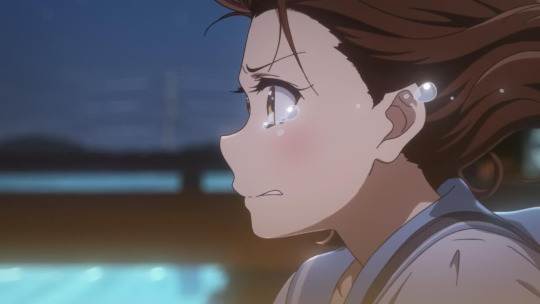
-How you think you look running
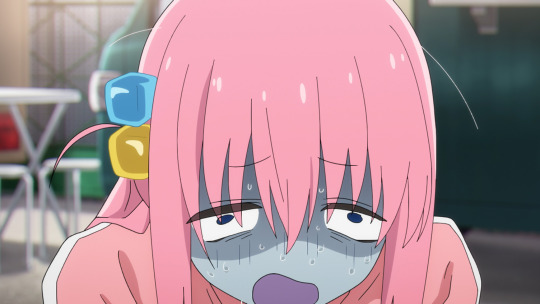
-How you actually look running
What I am not saying here is that Miyazaki is wrong or anything to care about running. Instead I am saying that when he discusses how beautiful the act-of-running is, that is only partially coming from observing reality; it primarily comes from animation as a medium. Animation's value-add is the art-in-motion, you want the screen to be expressing itself to the audience through movement. You as an audience member want to see the animator themselves express their own aesthetic to you through that movement. There are a million ways to make that happen but running is one of the strongest; its character focused, universally applicable, common *enough* that you know what it looks like, you can make it diegetic to a climax if the plot demands it, etc. It makes sense for animation to utilize it, and it does - more than just animation, film all over does! It's a universally common symbol in the language of film with decades of meaning built into it.
But that meaning does not first come from real life, it comes from those demands of film-as-a-medium. In all likelihood no one has ever emoted a climactic meaning to you while running, or after running, you don't have a frame of reference for that. When you, as a viewer, are emotionally moved by the act of running, you feel that because film as a medium taught you to feel that. Compare it to how animation/film often focuses on the eyes and mouth for expressing emotion - that is not an invention of film, that is how real human beings communicate, when talking to a person you focus primarily on their eyes and mouth. The semiotics of film's language around eyes is built primarily from real life, which is much less true for running.
What is cool is how much of a semiotics of running animation has been built up given its origin within the demands of the medium. Miyazaki had a hot take and a desire to see artists push the craft as early as 1980; since then I can think of hundreds of running cycles artists have put their own touch on. I think of these as real Artist moments - it is something that the craft leads you to that you become obsessed with perfecting, existing for its own sake, something that interplays between observation and pure creativity. I can see these scenes now outside their own story, as the use and evolution of language. Which is neat!
159 notes
·
View notes
Text
I've been going through my collection of old (pre-2016 for the most part) academic papers on BL and thought, hey, why not re-read some of them and sum them up so folks can see whether they want to check them out in full?
Today's offering:
Beautiful, Borrowed, and Bent: “Boys’ Love” as Girls’ Love in Shōjo Manga by James Welker, originally presented at the Third International Convention of Asia Scholars, August 19–22, 2003, Singapore, and published in Signs, Vol. 31, No. 3, New Feminist Theories of Visual Culture (Spring 2006), pp. 841-870, UChicago Press. [Jstor]
Welker starts off with a brief explanation of what the BL genre is, what terminology he uses ("BL" as an umbrella term that includes the earlier names of tanbi, shōnen ai, yaoi, and the long-form 'boys' love'):
“Boys’ love” manga emerged as a subgenre of shōjo manga (girls’ comics) around 1970 just as women artists were taking over the shōjo market.(*) It quickly became among the most popular shōjo manga genres, and its creators became some of the best-loved artists in the industry.
(* First published in the monthly Bessatsu shōjo komikku in December 1970, Keiko Takemiya’s “In the Sunroom” (Sanrūmu nite [1970] 1976) was probably the first boys’ love narrative. See Aoyama 1988, 188.)
- Welker 2006:841
He goes on to challenge the common perception of BL as a genre "by straight women for straight women":
[T]he genre is widely considered to offer a liberatory sphere within which presumably heteronormative readers can experiment with romance and sexuality through identification with the beautiful boy characters. […] Members of the Japanese lesbian community have, however, pointed to boys’ love and other gender-bending manga as strong influences on them in their formative years […]
Clearly boys’ love manga can be viewed through a different lens from that which most critics and scholars have been using, and hence the full potential of boys’ love is largely overlooked: that of liberating readers not just from patriarchy but from gender dualism and heteronormativity.
- Welker 2006:842-843
He introduces the texts he will analyse (Takemiya Keiko's Song of Wind and Trees 風と木の詩 kaze to ki no uta, 1976-1984 and Hagio Motō's Heart of Thomas トーマの心臓 tōma no shinzō, 1974), and concludes the essay's intro section as follows:
This reading will employ lesbian critical theory, visual theory, and reader responses to these and similar texts to show how 1970s boys’ love manga is not merely queer on its surface but how it opened up space for some readers to experiment with marginalized gender and sexual practices and played a role in identity formation.
- Welker 2006:843
Welker goes into the questions of applicability of theories that weren't originally developed for this specific context – visual theories were largely developed through film analysis; European and North American models of gender and feminist theory, while also having informed academic discourse in Japan, in their origin operate on culturally specific assumptions and need to be applied with care.
He talks about the tradition of androgynous and cross-dressing heroines of early shōjo manga and their connection to the earliest BL manga, the dilemma of the "beautiful boy" characters' gender and sex and how to read these – are they boys? idealised self-images of girls drawn onto boys' bodies? neither male nor female? sexless altogether?, and the way Japanese readers in the 1970s, already culturally familiar with gender performance through kabuki or the all-female Takarazuka Revue and similar troupes, received the gender-bending nature of BL stories. He also comments on the role fan interaction via magazines, and the way readers were learning about queer life in Japan:
By the early to mid-1980s, the magazines’ readers were learning in real terms about the world of Shinjuku ni-chōme, Tokyo’s well-known gay district, described as a world full of “beautiful boys like those in the world of shōjo manga” (Aran 1983, 15), as well as various aspects of lesbian life in Japan (Gekkō 1985). In spite of the connections drawn on the pages of these magazines, the possibility that these narratives might be seen to actually depict homosexuality remains broadly denied. To allow that the narratives might truly be about homosexuality—between these girls-cum-beautiful boys—would be an apparently unthinkable invitation to read the narratives as lesbian.
- Welker 2006:857
Welker briefly explores how the example texts of Song of Wind and Trees and Heart of Thomas "serve many of the functions lesbian critics and theorists have outlined as roles of lesbian texts" (Welker 2006:858), then goes on to analyse the flower imagery of roses and lilies that is very prevalent in both titles, the intertextuality of these stories with European and French literature (and how the readers were expected to catch on to this intertextuality). On the transgressive and queering nature of writing and reading BL, he says:
[T]hrough acculturation to gender performance in Takarazuka and kabuki and by such cross-dressing manga icons as Sapphire and Oscar, as well as the deliberate ambiguity of the beautiful boy, the reader is encouraged to see not just a girl but herself within the world of boys’ love and, ultimately, is encouraged to explore homoerotic desire, either as a beautiful boy or as herself, either alone or with others, either as her fantasy or as her reality. […] Regardless of whether boys’ love manga were created merely to offer heterosexual readers a temporary respite from patriarchal restrictions on their desire, some readers found in identifying with the beautiful boy a way through the looking glass to a world outside the patriarchy. And regardless of whether he is read as a boy or a girl, the beautiful boy can be read as a lesbian. […] For readers whose experience of sexuality and gender contravenes heteronormativity, works like Song and Thomas offer narrative safe havens where they can experiment with identity, find affirmation, and develop the strength necessary to find others like themselves and a sense of belonging.
- Welker 2006:865-866
I've been out of academia so long that I've lost any sense of what a good proportion of direct quotes to original text is, or whether it's even appropriate to quote as much as I did here. This is emphatically NOT an academic article in and of itself -- I'm posting on bloody tumblr. If anyone wants to add to this, I'll be thrilled.
One of the most commonly voiced criticisms of BL is that it's about, but not (or did not in significant part used to be) by or for gay men. This article does not address this point further—Welker does go into this in his more recent articles, iirc; if you've got beef with this aspect, @ him not me. I do however think it's worth noting that this 17-year-old article already recognises that the genre is queer, and has been since its inception.
#bl academia#bl theory#james welker#bl history#yeeting this into the void now#reading academic papers for fun not profit#my nonsense#watch me find errors or typos the minute I've hit post
108 notes
·
View notes
Text
spoilers for episode 2 of the fall of the house of usher
the end of episode two is just a masterpiece kinda
before i get into the meat and potatoes, this show is very interesting just in the way its formulated. we have a plotline in 1980, when madeline and robert are young, a plotline in the recent past, following all of our tragic bisexual kids' deaths, and a plotline following dupin and robert's conversation. theres so many layers to every conflict in this show so far, and i love it.
we're told from the start of the show that roberts kids will all die. this is already interesting, instead of it being a twist, we're told from the get-go. instead of being surprised at a bomb going off, the writers tell us the bomb is there, making it all the more interesting seeing it go off.
towards the final moments of episode 2, perry is having a conversation with verna, and she warns him that its not too late to stop. this isn't perry's last warning, it's ours. more media-savy viewers couldve guessed perry would die at the end of the episode, but this is our confirmation.
perry's death is ultimately a tragedy. throughout the episode, we see his brilliance. he's smart enough to manipulate his peers into whatever he sees fit, clever enough to rewire a "watering" system, and cunning enough to get some of the most influential people ever into a single one-night orgy. his smarts, his intelligence could've gone towards anything. he could do anything he wants, napoleon says so. but he focuses his time into something this meaningless and inconsequential. but everything has consequences, thats something verna says.
after our warning, our premonition, we're pulled back into the party. wicked game by the newton brothers begins to play, and that is when shit goes nuts. the camera movement is fast, eccentric, making damien chazelle's camera quake in its boots. and on screen, hundreds of people fucking. its a moment without thought, people are consumed purely by carnal desire, and its simultaneously beautiful and disgusting. then the rain starts to fall, but its acid.
the people, previously connected by sex, are forced together as their skin melts together. their screams are unheard, they are simultaneously together and more alone than they ever were. perry's brilliance, consumed by desire for sex, is melted and conjoined with the other bodies in the room. its the scariest thing ive ever seen flannigan make. ive never felt this uncomfortable since a similar scene in nope.
its brilliant, poetic, tragic, and gory and fleshy.
sorry for my rudimentary pointless pretentious essay i literally couldn't sleep until i wrote this stuff down.
#rudimentary pretentious essay#the fall of the house of usher#fall of the house of usher#fannigan#flannigan#mike flannigan#wtf
51 notes
·
View notes